
ANDREW AND SHAUNA SMITH’S SAVORY FUND HAS KICKSTARTED GROWTH FOR EMERGING CHAINS INDUSTRYWIDE.


ANDREW AND SHAUNA SMITH’S SAVORY FUND HAS KICKSTARTED GROWTH FOR EMERGING CHAINS INDUSTRYWIDE.

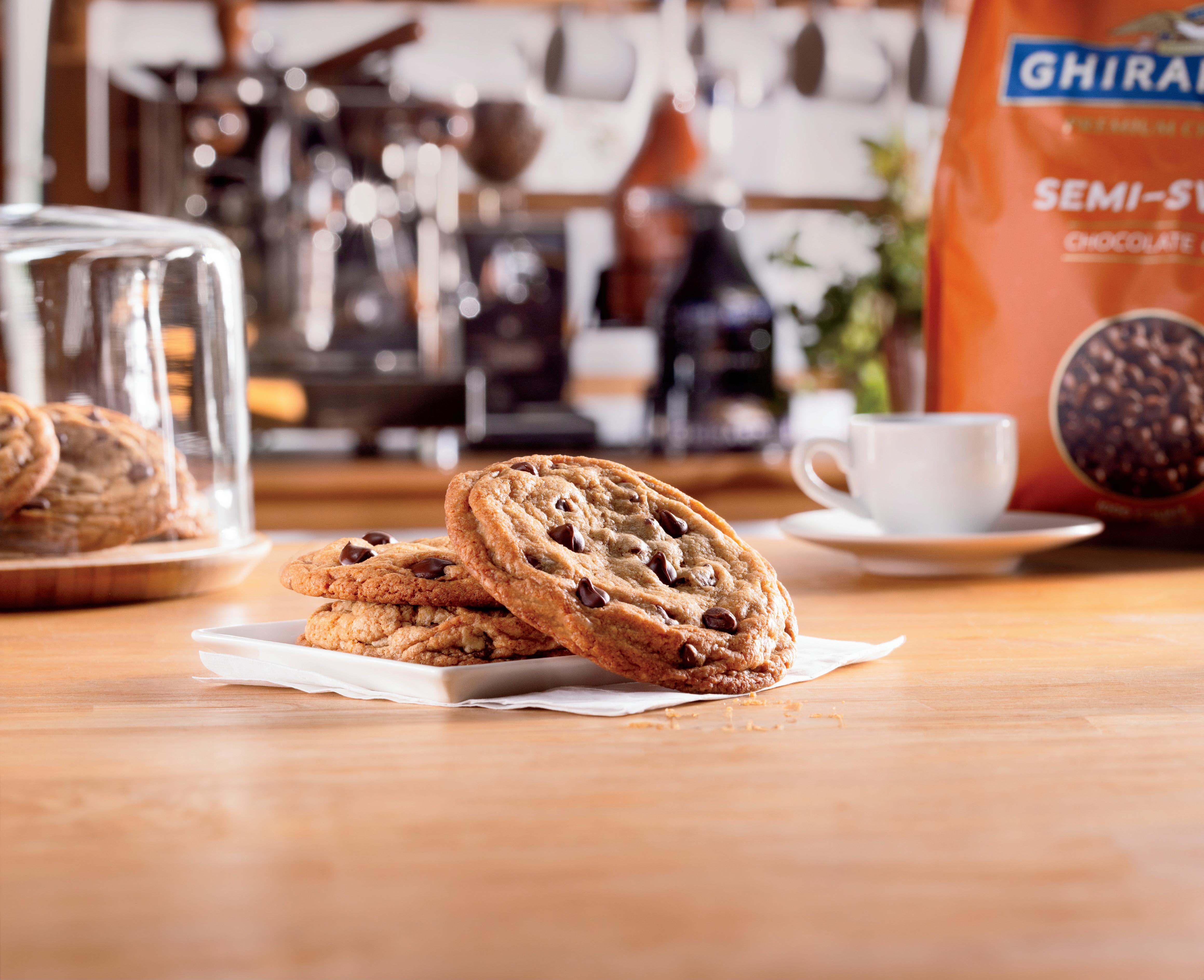


91% of consumers are willing to pay more for chocolate chip cookies made with Ghirardelli.* Ghirardelli Professional Products o ers a wide range of premium ingredients to allow operators to develop delicious menu items.
Discover how Ghirardelli makes life a bite better by visiting ghirardelli.com/professional


Request a


RANCH CAESAR
ITALIAN FRENCH

Columbus Vegetable Oils offers a variety of dressings that are organic, GMO-free, gluten-free and nut-free.
Single serve cups and gallon sizes available. Ask about our private label options.
HONEY MUSTARD THOUSAND ISLAND
CREAMY GARLIC
VINAIGRETTE BLUE CHEESE
sales@cvoils.com www.cvoils.com
Des Plaines, IL. and Reno, NV.









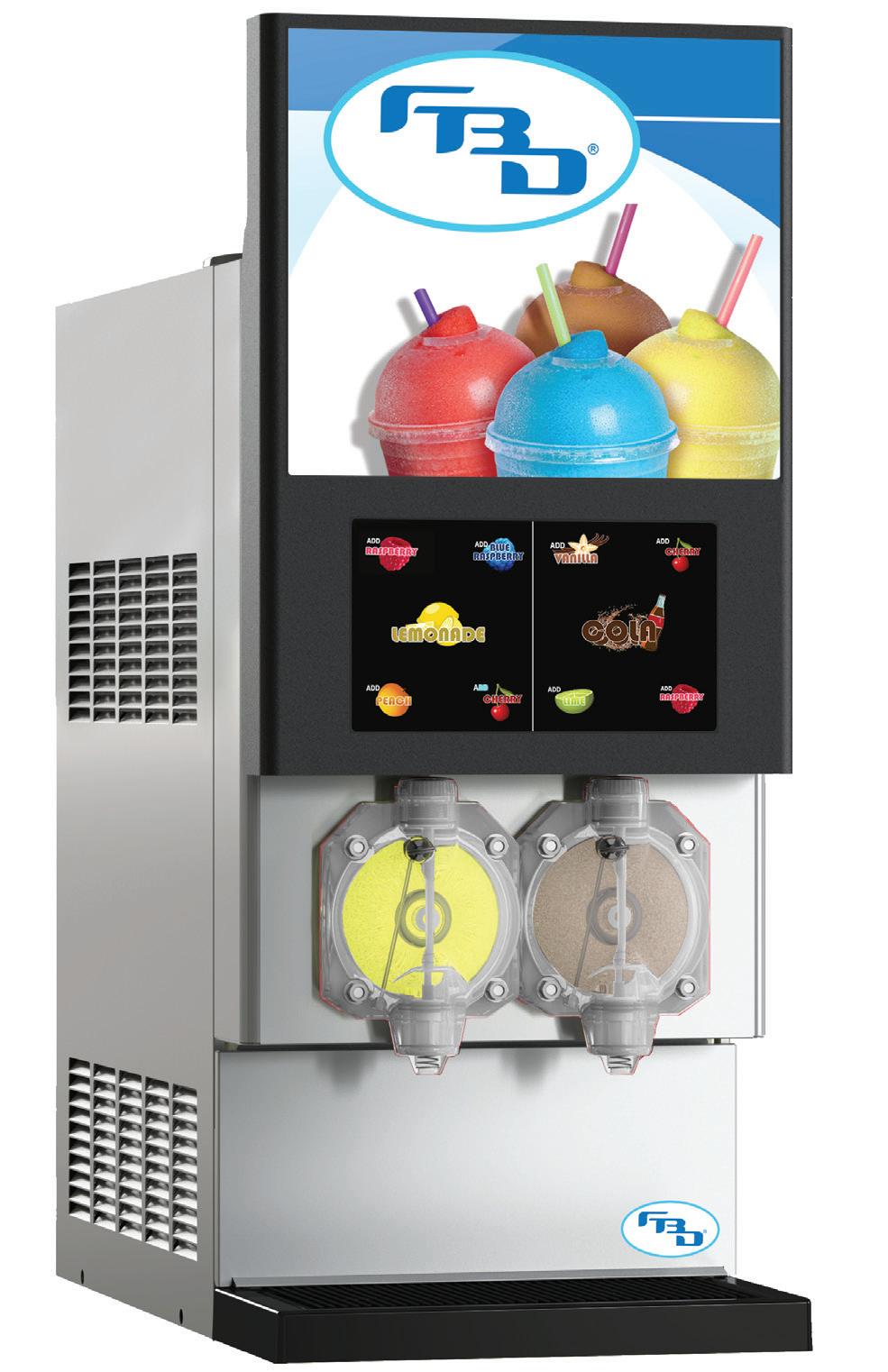

NEWS
18
FRANCHISE FORWARD
The Value of Sports Partnerships
Brands are building awareness by making appearances alongside athletics.
BY SAM DANLEY56
WOMEN IN LEADERSHIP
Building Diversity in Franchising
Industry experts share knowledge on how to make it big in this growth segment. BY SATYNE DONER
INSIGHT
13
FRESH IDEAS
How Better-For-You Brands Keep Pricing in Check
Operators are still dealing with the impacts of supply chain and inflation.
BY SAM DANLEY16
ONES TO WATCH
Costa Coffee
The British beverage chain wants to go big in the U.S.
BY AMANDA BALTAZAR61
OPERATIONS Catering Makes a Comeback
The sales channel’s value has increased mightily in the post-COVID environment.
BY SAM DANLEY64
START TO FINISH
Jeff Drake
Learn how the CEO of Protein Bar & Kitchen and his team brought forth a ‘taste revolution.’
Shauna and Andrew Smith are always on the lookout for the next great chain.



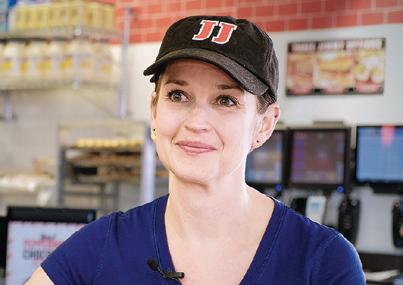


EDITORIAL
EDITORIAL DIRECTOR
Danny Klein dklein@wtwhmedia.com
QSR EDITOR
Ben Coley bcoley@wtwhmedia.com


FSR EDITOR Callie Evergreen cevergreen@wtwhmedia.com
ASSOCIATE EDITOR
Sam Danley sdanley@wtwhmedia.com
BRANDED CONTENT STUDIO
DIRECTOR OF THE BRANDED CONTENT STUDIO, FOOD AND HOSPITALITY Peggy Carouthers pcarouthers@wtwhmedia.com
BRANDED CONTENT ASSISTANT EDITOR
Ya’el McLoud ymcloud@wtwhmedia.com
BRANDED CONTENT ASSISTANT EDITOR
Olivia Schuster oschuster@wtwhmedia.com
ART & PRODUCTION SENIOR ART DIRECTOR
Tory Bartelt tbartelt@wtwhmedia.com
FSR ART DIRECTOR Erica Naftolowitz enaftolowitz@wtwhmedia.com
SALES & BUSINESS DEVELOPMENT
GROUP PUBLISHER
Greg Sanders gsanders@wtwhmedia.com
NATIONAL SALES DIRECTOR
Eugene Drezner edrezner@wtwhmedia.com 919-945-0705
NATIONAL SALES MANAGER
Edward Richards erichards@wtwhmedia.com 919-945-0714
NATIONAL SALES MANAGER
Amber Dobsovic adobsovic@wtwhmedia.com 919-945-0712
NATIONAL SALES MANAGER
John Krueger jkrueger@wtwhmedia.com 919-945-0728
CUSTOMER SERVICE REPRESENTATIVE
Tracy Doubts tdoubts@wtwhmedia.com 919-945-0704
CUSTOMER SERVICE REPRESENTATIVE
Brandy Pinion bpinion@wtwhmedia.com
662-234-5481,
FOUNDER
Webb C. Howell




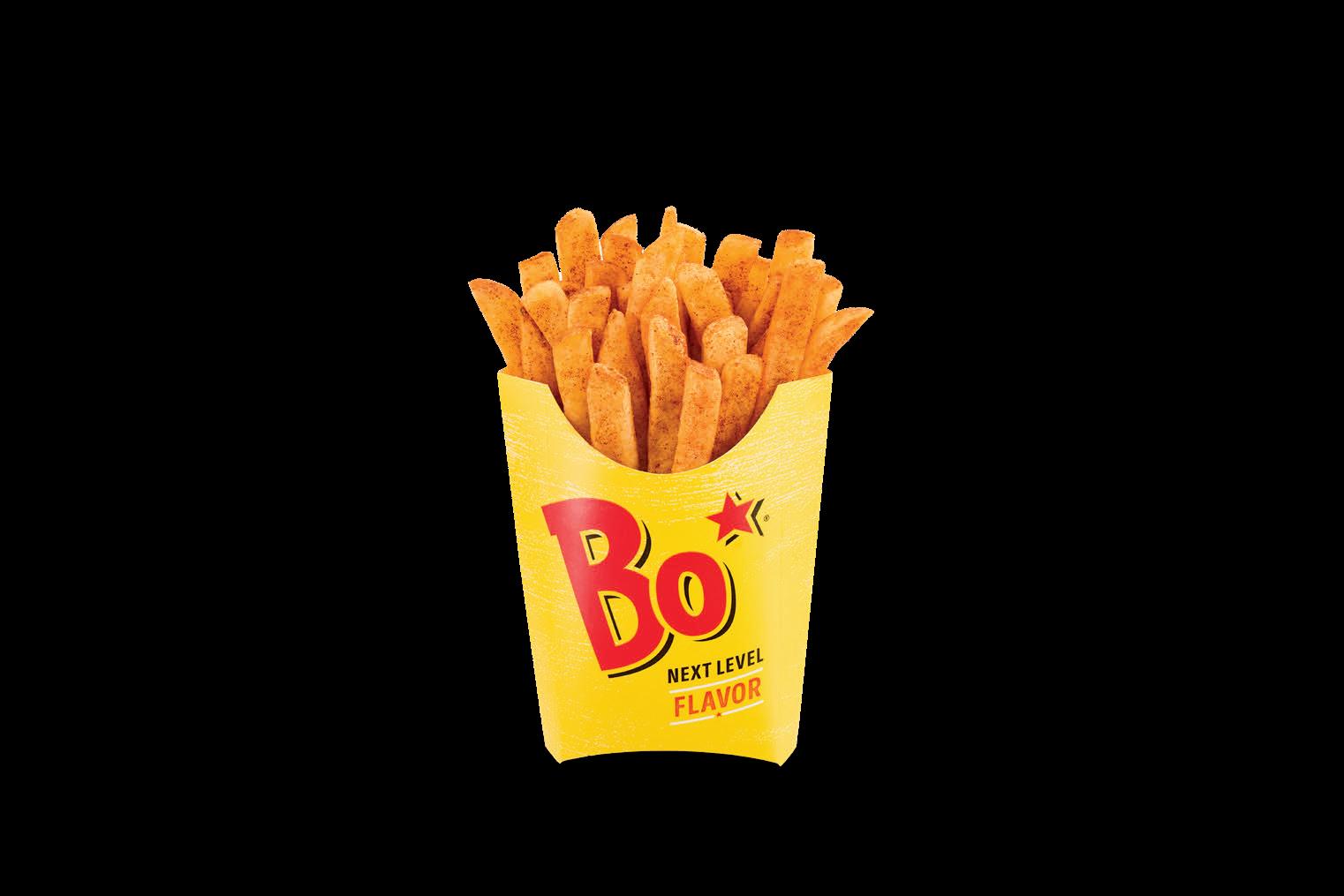

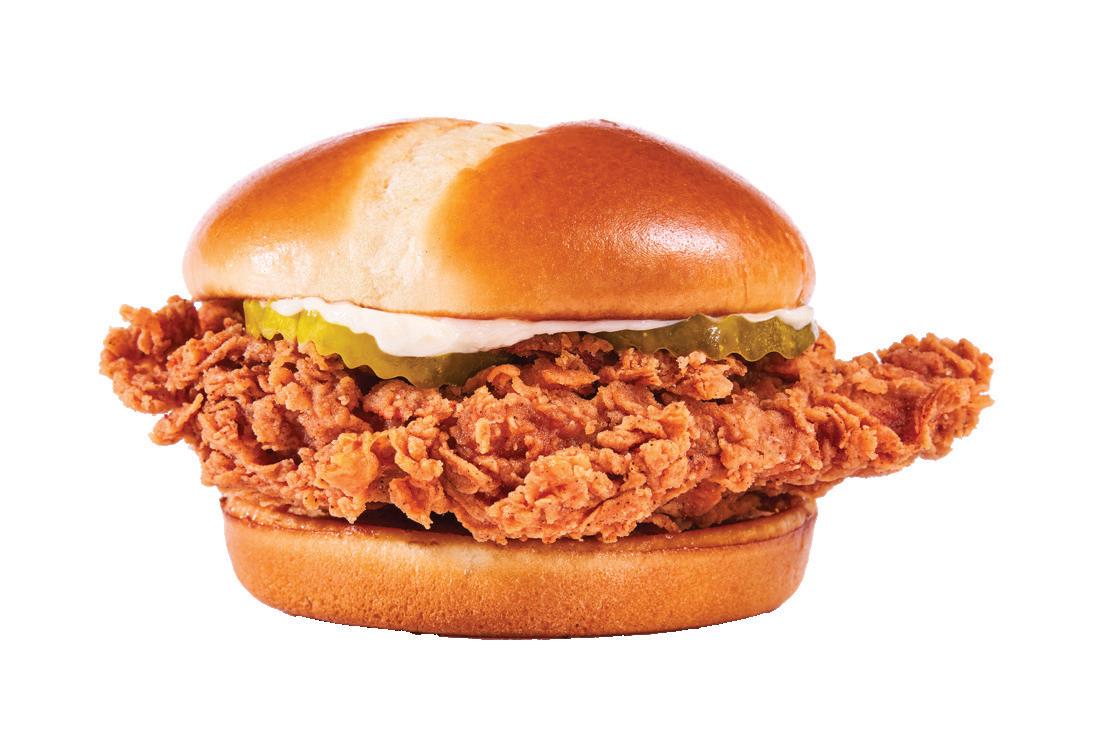




Food and drink brands seek capital injections all the time, but it’s not always the right move.
There usually comes a point in a restaurant’s life when they hit a financial wall.
The operator, through a bootstraps mindset, may have grown unit count into the mid-to high-single digits, but more capital is needed to reach a bigger scale. This turning point in a restaurant’s history prompted us to center this month’s feature around what it takes for a restaurateur to be invested in. Savory Fund— a private equity firm that’s been on a tear since the pandemic began—was an obvious choice to get the point across.
 BCOLEY@WTWHMEDIA.COM
QSR MAGAZINE
BCOLEY@WTWHMEDIA.COM
QSR MAGAZINE
The company has poured money into 11 emerging restaurant concepts spanning quick service and casual dining. Each of them was on a growth journey prior to meeting Savory leaders Andrew Smith and Shauna Smith. Both sides struck a deal once they recognized their philosophy on culture, leadership, and expansion aligned. The feature-length piece describes Andrew and Shauna’s journey into the restaurant industry and maps out exactly what the couple looks for in potential partners. The duo also provides advice on what eligible operators need to be asking themselves as they decide whether to remain comfortable with what they have or ramp up business.
Looking at the bigger picture, private equity plays a major role in the restaurant industry. And this is for big or small chains. Sometimes it works, other times not so much. For instance, three years ago, Peak Rock Capital acquired decades-old family-run business Shipley Do-Nuts when it had a little more than 300 shops in nine states. To start 2024, the brand has more than 350 shops, expanded to 12 states, and is scheduled to open 30-plus locations this year. Also,
over the past three years, AUV has grown by 50 percent. In a not-so-great example, QDOBA CEO John Cywinski said in January at the ICR Conference that the Mexican chain was simply a “fly on an elephant’s ass” when it was owned by Apollo Management Group from 2018 to 2022.
The topic of “how to be invested in” is so relevant that our second annual QSR Evolution Conference in downtown Atlanta this September will dedicate a panel to it, with speakers including Andrew Smith; Jim Balis, managing director of private equity firm CapitalSpring, Geoff Henry, Gong cha’s president of Americas; Lauren Fernandez, CEO of food brand accelerator First Course; and Eric Olson, a Jimmy John’s franchisee. The panel will be moderated by Michael Schatzberg, co-managing partner and managing director of Branded Strategic Hospitality.
Elsewhere in this issue, we cover how brands are working overtime to value engineer their restaurants in the face of rising construction costs. Your typical freestanding drive-thru with plenty of dining room seating just isn’t cutting it anymore. First off, the real estate isn’t available, and secondly, it’s a lot of wasted space with more customers opting for takeout and delivery. In the same vein, we also explore how chains are managing their menus in inflationary times, particularly better-for-you brands, which typically have higher prices than their less-healthy peers.
Ben Coley, Editor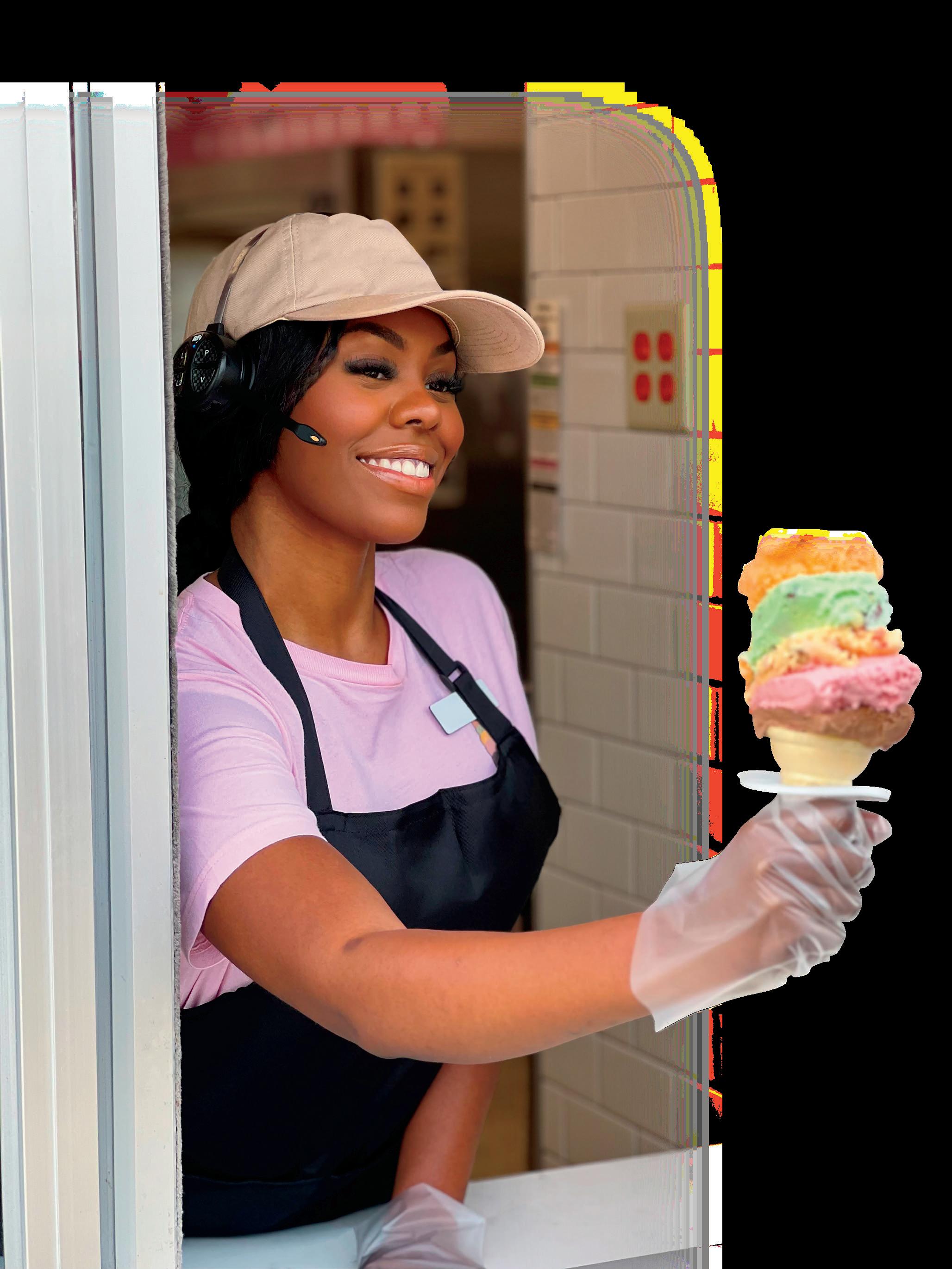
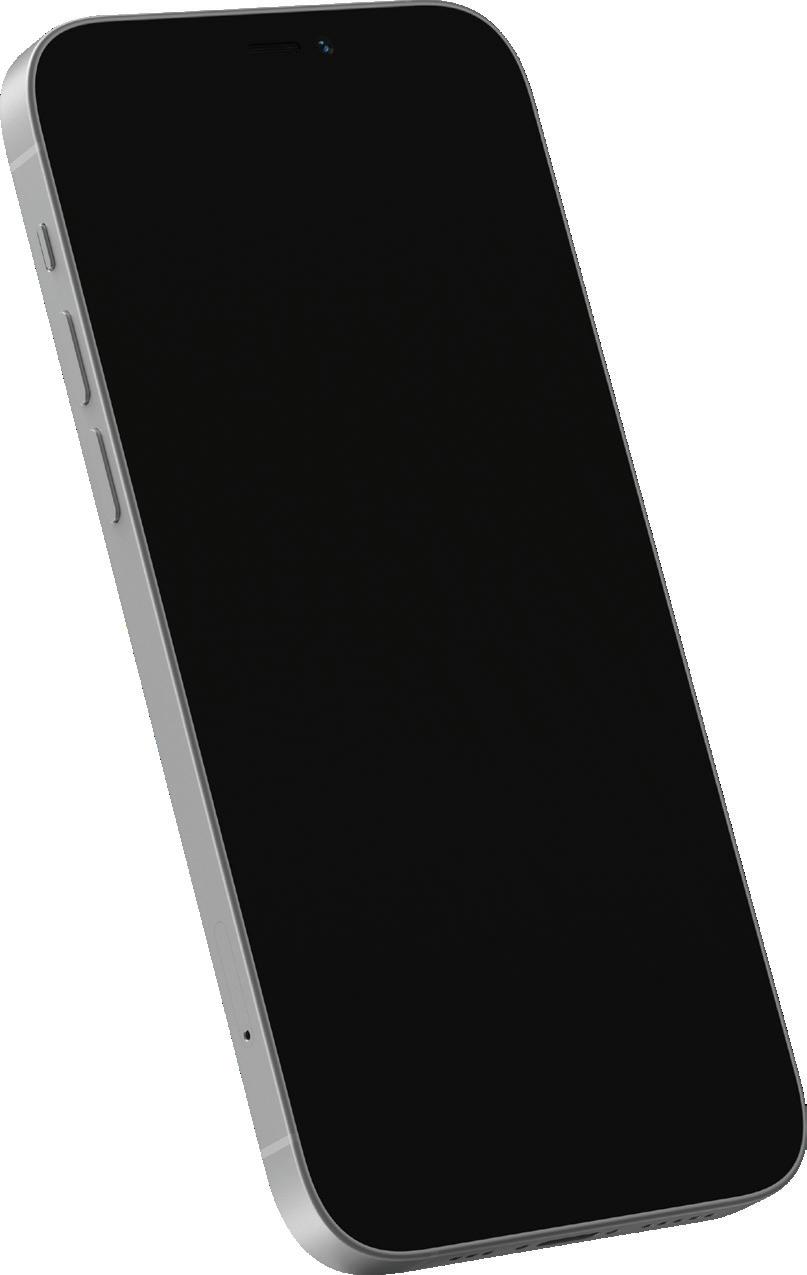




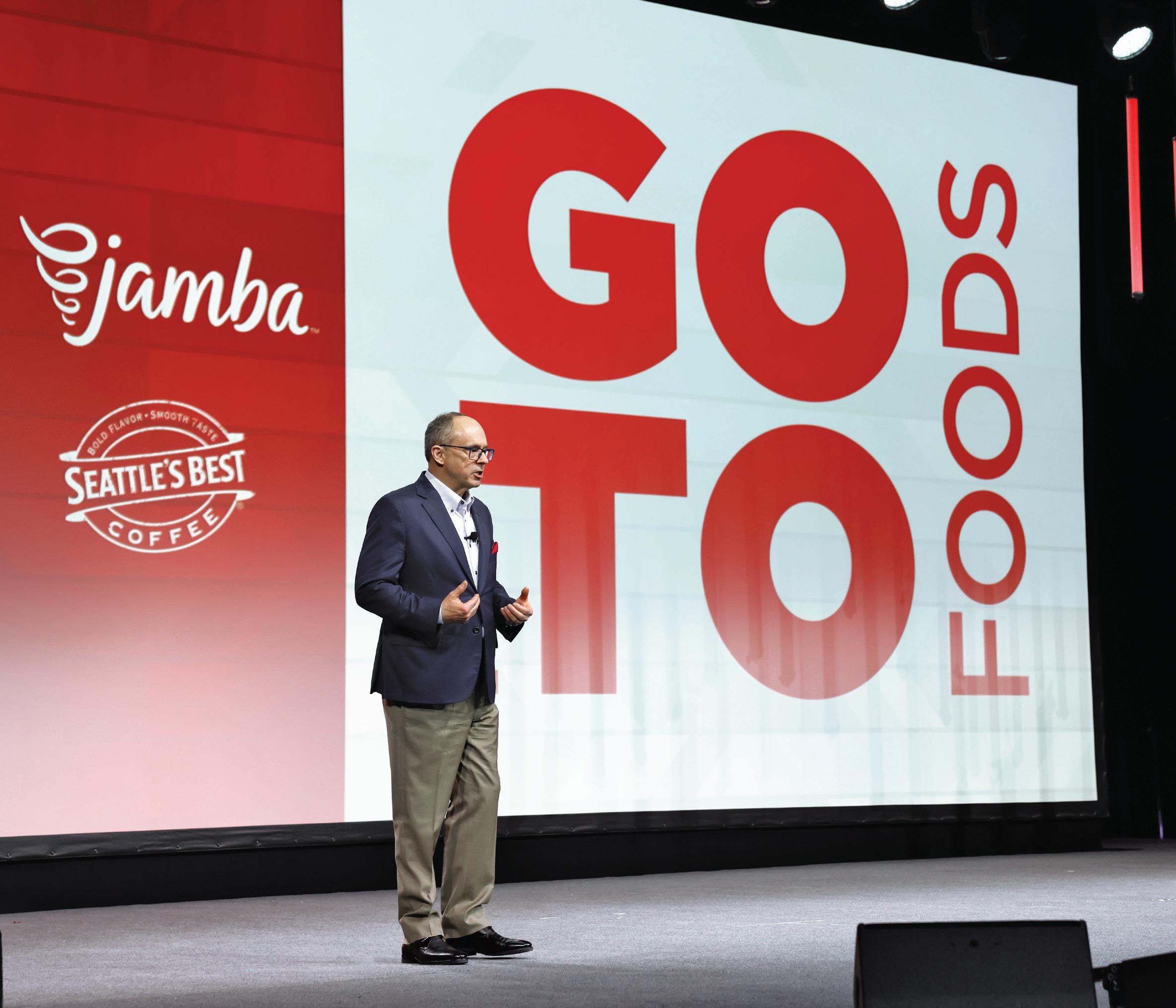
IN FEBRUARY, FOCUS BRANDS changed its name to “GoTo Foods,” signifying years of work to become an interconnected restaurant platform. The announcement was made at the company’s biennial global conference in Las Vegas.
The parent of Auntie Anne’s has entered a transformational period.
The new name, chosen from over 200 options, aims to enhance consumer-facing initiatives and highlight the familial relationship between the brands. Plans include launching GoTo Foods gift cards usable across all chains and potentially consolidating loyalty programs under the new banner. CEO Jim Holthouser outlined the company’s shift from individual brand management to a centralized platform, which has led to increased efficiency and synergy across operations. The previous decentralized approach was deemed unsustainable, prompting the adoption of unified systems to drive growth and enhance customer experiences.
As a result, GoTo Foods has significantly increased investment in marketing, digital capabilities, and loyalty programs.
CEO Jim Holthouser makes the name change announcement in Las Vegas at the biennial global conference.63% liked digital because of immediate delivery
53% said they’re easier to send than mailing physical cards
50% said they’re easier to purchase than physical cards

• Customers remain split 50/50 on whether they prefer digital or physical gift cards.
• Among those interested in digital, 63 percent like it because of immediate delivery. Fifty-three percent said they’re easier to send than mailing physical cards, and 50 percent said they’re easier to purchase than physical cards.
• Of those who want physical gift cards, 85 percent want to give an actual card or gift. Fifty-two percent want the recipient to unwrap a gift, and 25 percent find it easier to buy than through online services.
• Fiserv’s thoughts:
“
Ultimately, merchants cannot prioritize one purchasing area over the other. Instead, to maximize business revenues, merchants must equally focus on optimizing both their physical presence and online distribution.”
• Forty-seven percent of guests buy gift cards from merchants that offer multiple options. Some examples are grocery stores like Kroger and Publix, big box retailers like Walmart and Target, and wholesale retailers such as Costo and Sam’s Club.
• Thirty-four percent go to businesses where the gift card will be redeemed and 16 percent go to an online gift card marketplace (i.e. Gyft and eGifter).
• The timing of gift card consumption is important as well. About three-fourths of customers purchase gift cards for birthdays, 70 percent for winter holidays, 54 percent for congratulations, and 40 percent for weddings. Fiserv advises merchants that “Pairing an augmented distribution network with milestone-specific events will keep merchants at the forefront of consumer demands.”
• About 60 percent of guests are aware they can send gift cards through peerto-peer apps, like PayPal, Cash App, and Venmo. When consumers were asked about their experience using a peer-to-peer app for this purpose, 67 percent said it was easy and convenient. Thirty-six percent said they saw more merchants than they expected. Meanwhile, 32 percent said the app lacked the desired merchants.
• P2P platforms have become so popular that total transactions were projected to reach $1.4 trillion in 2023, a 28.5 percent increase from 2022, according to eMarketer.
• Thirty-nine percent of respondents agreed that gift cards provide better money management than cash. Thirty-seven percent said gift cards and cash are interchangeable. Thirty-two percent said gift cards are the new cash.
• Of those who said they use gift cards for budgeting, 56 percent said they weren’t the only one in the household who does this. Sixty-eight percent said their spouse also does it; 45 percent said their son, 28 percent said their daughter, and 24 percent said extended family living in the house.







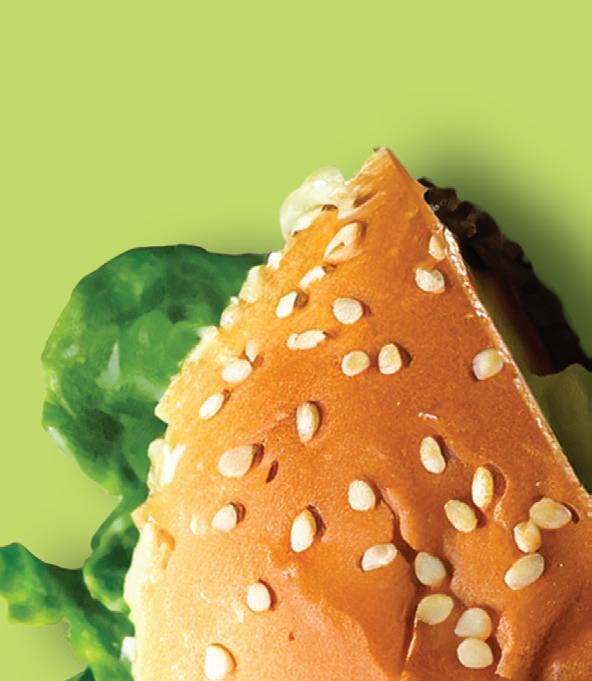





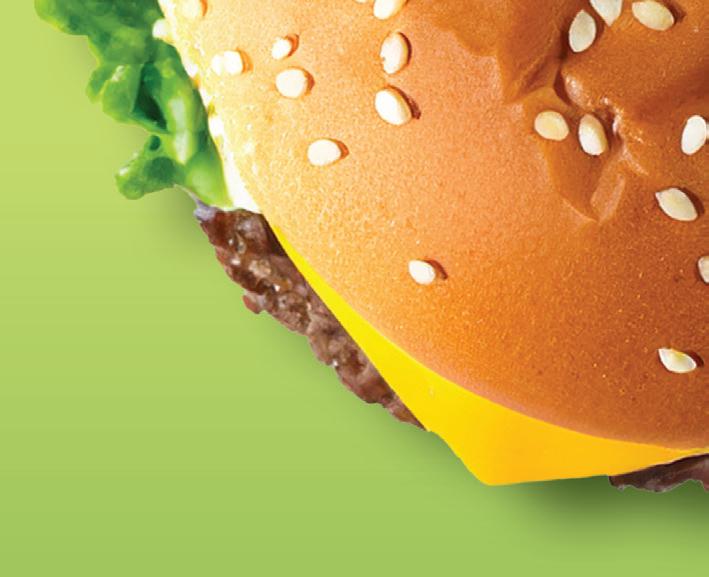





















97%


































Sauce Gun Bottle has virtually no sauce waste, which means maximum cost savings.




















Consistency is Key. Your customers are loyal when they get the food they want and expect, every time. With the consistent sauce portioning of Sauce Gun Bottle, keep your customers coming back for the same delicious food.


...Get early access here!





Customers are willing to pay more for healthy products, but inflationary pressures are squeezing that leeway.BY SAM DANLEY

Health-forward restaurants typically market around the quality of their food—spotlighting fresh ingredients, functional benefits, and their commitment to avoiding things like additives and artificial sweeteners. Most consumers expect to pay a premium for those attributes, giving better-for-you brands a certain level of flexibility when it comes to pricing. That dynamic has become more precarious as higher commodity and labor costs eat away at margins and make profitability an uphill battle.
Clean Juice cofounder and CEO Landon Eckles says costs have been trending upward for a while, starting with paper goods in 2022, followed by meat, dairy, and produce in 2023.
“Everything we bring into the restaurant is certified organic, and of course, that’s seen a huge rise in costs as well,” he says. “We kind of got hit everywhere. It’s been like that for a lot of brands, but healthier brands in particular just don’t have cheaper options
they can turn to without lowering the nutritional integrity.”
The company last year marketed around price for the first time with its “$6 Summer” LTO. It featured seven products, four of which were new, for under $6. Now, it’s running a pick-two menu where guests pick a smoothie and half sandwich for under $13.
“We’re starting to be more sensitive and talk about price,” Eckles says. “With health and wellness, I think the focus is always going to be more on what you offer and less on what you charge, but at the same time, we have to be conscious of what’s going on in the marketplace.”
Instead of taking pricing as a brand, Clean Juice is working with franchisees to identify items that are underpriced or overpriced in their specific markets, he adds. It also is making some changes to the menu to help offset cost pressures. The juice bar franchise is cutting single-use ingredients when possible and pri-
oritizing SKUs that can be used across multiple categories. It also is eliminating slow-moving items to cut down on waste and cap unnecessary expenses.
Labor inflation poses an even bigger challenge. Eckles says the average starting wage for a worker in the brand’s home state of North Carolina has doubled since the first store opened a decade ago.
“Our menu prices certainly have not doubled since we started, so the biggest challenge is figuring out how to continue paying people a good wage without pricing ourselves out of the industry,” he says.
Clean Juice added a tipping prompt to its POS to support employees. On average, they’re seeing anywhere from an extra $3 to $5 per hour in tips alone. Other initiatives, like incentives for guests to order through the mobile app and a self-order kiosk program, are unlocking labor efficiencies inside the store.
Playa Bowls is striking a similar balance between pricing, menu engineering, and labor optimization to navigate inflation. CEO Dan Harmon says just about every fruit and vegetable found in the restaurant has been challenged at one point or another. That means the açai bowl chain has to tread lightly when responding to those pressures with price increases.
Take blueberries as an example. When costs for that ingredient nearly tripled earlier this year, Playa Bowls couldn’t just raise the price of a blueberry smoothie threefold and call it a day.
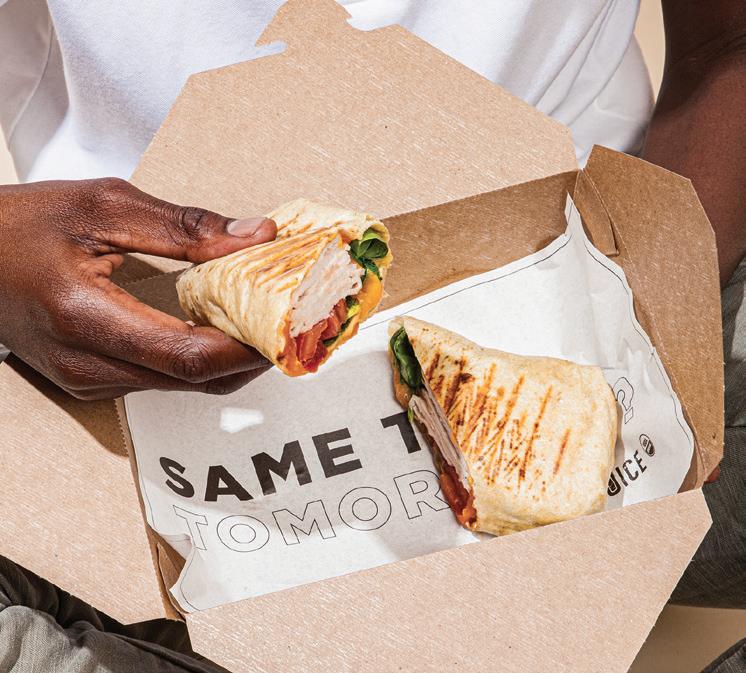


“Will some consumers pay more for a better-for-you product? The short answer is yes, but that doesn’t mean we have free reign on pricing,” Harmon says. “You still have to make sure you aren’t passing everything onto the guest because the pushback can be really quick if you mess with the balance too much.”
Playa Bowls took approximately 5 percent pricing on a handful of in-store items and 3 percent pricing on third-party delivery menus last year. It also ensured stores have the right inventory management tools in place to keep food waste at a minimum. And while it hasn’t made any menu cuts or ingredient substitutions, it’s been finding opportunities to highlight more profitable items and steer guests away from pricier ingredients.
The Playa Rewards platform is offering some help on both the pricing and the labor front. Harmon says engagement data and direct communication with the program’s nearly 2 million members help shape decisions around where and when elevated costs are passed down to customers.
“Over 40 percent of our sales come from loyalty guests,” Harmon says. “That’s a big deal because those customers know what they want and order ahead, so team members can have it ready when they walk in. That makes it easier for them to operate locations and helps us anticipate their needs.”
Salad and Go is using its hyper-efficient supply chain and labor model to keep prices low. Products are delivered straight from the farm to central kitchens, where team members prep, clean, and cut ingredients that are sent to stores daily. It currently has one central kitchen in Phoenix that serves the Southwest, with a second coming to Dallas that will cover as far as Atlanta and the Midwest. CEO Charlie Morrison says each can support as many as 400 units.
“With most of the prep done off-site at the central kitchens, it takes smaller spaces and fewer in-store team members to assemble the meals,” he says.
The chain isn’t immune from inflation and has taken some small pricing actions to offset higher costs. Chicken, beef, produce, and diesel are some key areas on Morrison’s radar. He says Salad and Go’s sourcing and distribution teams have contract management strategies in place with supplier partners to avoid fluctuations when possible. Keeping an eye on factors like weather, seasonality, governmental policy, and farmer planting intentions helps with planning ahead to avoid major hikes, too.
The low back-of-house labor requirements enable the company to pay its workers competitive wages while maintaining an affordable price point for customers, delivering on its mission to “eliminate the conflict between accessibility, affordability, and wellness.” The company offers 48-ounce salad bowls filled with mixed greens and protein for under $7.
Morrison says that isn’t just cheaper than most better-for-you menu prices. It’s also more affordable than the value meal options found at many traditional fast-food locations.
“Our supply chain and centralized labor model, coupled with a targeted distribution footprint, ensure the freshest ingredients are delivered to our stores,” Morrison says. “Our operational efficiency means value gets passed down to our guests so we can offer a radically better price on high quality, craveable, healthy food.” Sam


Unique: The first and only waffle-flavored waffle fry.
Portable: Ideal for QSRs and customers on the go.
All-day appeal: Popular for breakfast, lunch, dinner and late night.

On-trend: Chicken & waffles’ menu incidence is up 636% since 2012.1
Easy: No additional training or equipment required.
NEW! Simplot® Maple City™ Waffle Flavored Potatoes

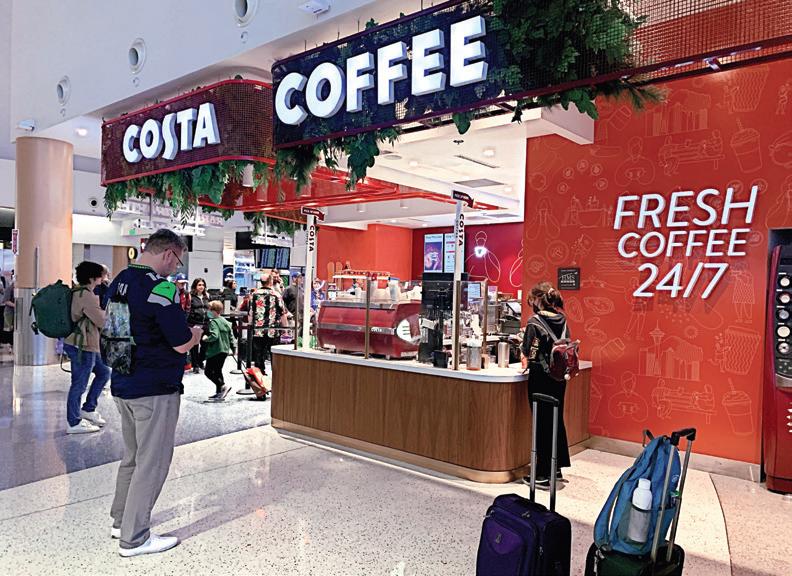
FOUNDERS: Sergio and Bruno Costa
HEADQUARTERS:
Loudwater, Buckinghamshire, England
ANNUAL SALES: $297 million (2023)
TOTAL UNITS: (global and U.S.): Globally around 4,100 plus around 16,000 Smart Cafes; six retail locations in the U.S. and around 250 Smart Cafes
FRANCHISED UNITS: Zero in the U.S.; around 2,250 globally
COSTA COFFEE IS UBIQUITOUS IN THE U.K. AND IREland, where it has over 2,800 stores, more than double the number of Starbucks locations in the two European markets. It is now penetrating the U.S. market, but it’s taking a different tack in a country that’s seemingly
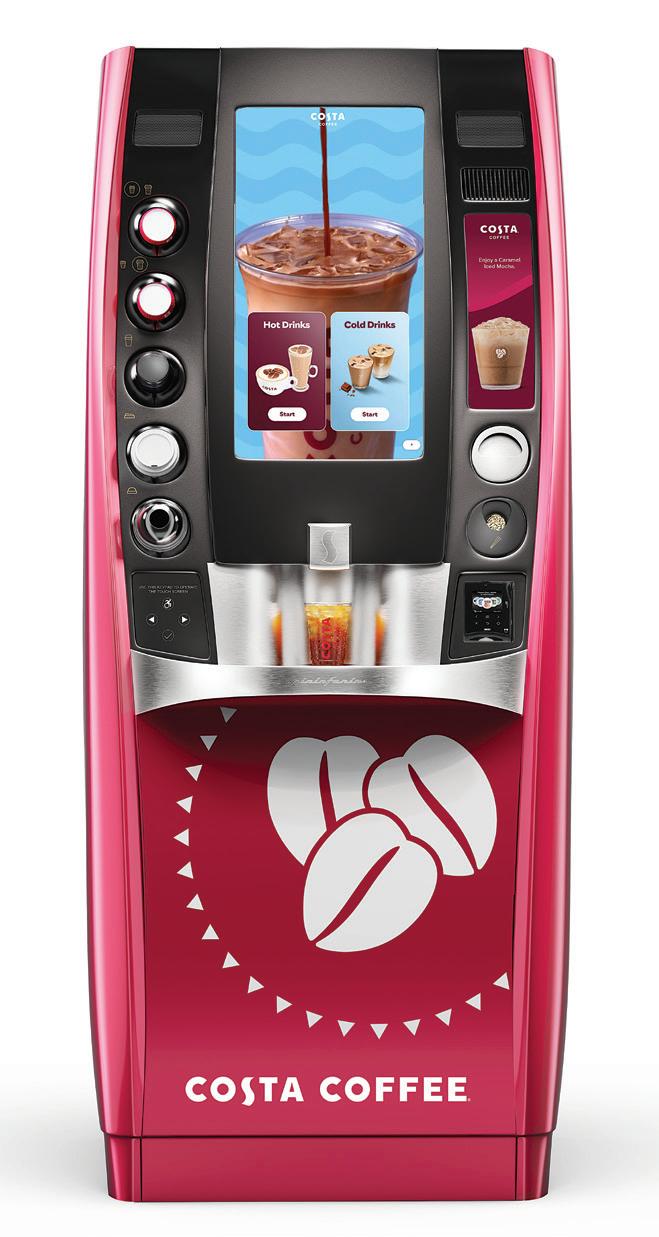
defined by a Starbucks on every corner.
The 53-year-old chain is a global business, with 4,100 coffee shops in 45 countries. Stateside, it has opened six coffee shops—five in Atlanta and one in the Seattle-Tacoma International Airport— but these are mainly to build awareness and get the brand in front of customers. In fact, the chain’s main goal here is to dominate the B2B world and be the premium coffee served at away-from-home occasions like hospitality, workplaces, convenience stores, and travel locations, largely through its innovative technology, including its Smart Cafe vending machine.
The coffee company has ambitious plans. Its goal is to reach $1 billion in total sales in the U.S. within the next decade, including becoming the No. 1 player in the
B2B coffee world and outgrowing the overall coffee category.
Costa comes from humble beginnings. In 1971, Italian brothers Sergio and Bruno Costa started developing their signature coffee, from a roastery in Fenchurch Street in London. That coffee became known as Mocha Italia, and a decade later, in 1981, they opened their first store in London and began growing from there, starting in prestigious neighborhoods.
Whitbread, the largest hotel and coffee shop operator in the U.K., acquired Costa in 1995 and held the company for 24 years. In 2019, Coca-Cola acquired the brand for $4.9 billion but just a year later the world closed down with the arrival of COVID. This put, as the British would say, a huge spanner in the works, with coffee shop clientele dwindling to nothing.
Since then, Coca-Cola has upped its game in the coffee realm. A year ago it hired Philippe Schaillee as the global CEO of Costa. Schailee’s background includes stints with Krups, Sara Lee (in a coffee-related role), and Jacob Douwe Egberts.
Costa opened its first U.S. coffee shop in Atlanta in 2022. The most recent Atlanta location opened in October.
“Atlanta is a perfect city for us to build the brand experience and brand awareness because Coca-Cola is located here and it’s such a creative city, a cultural hub,” says Erica Brown, managing director of Americas. “Those locations really provide us the opportunity to expose more customers to the brand. We’ll be really disciplined about what we do with those stores. And they’re a great way for us to really understand consumer behavior.”
And airports, Brown says, are a great spot to learn about consumer behavior “because you’ve got people coming from all over the world so it’s a great learning lab if you will. It’s also just a










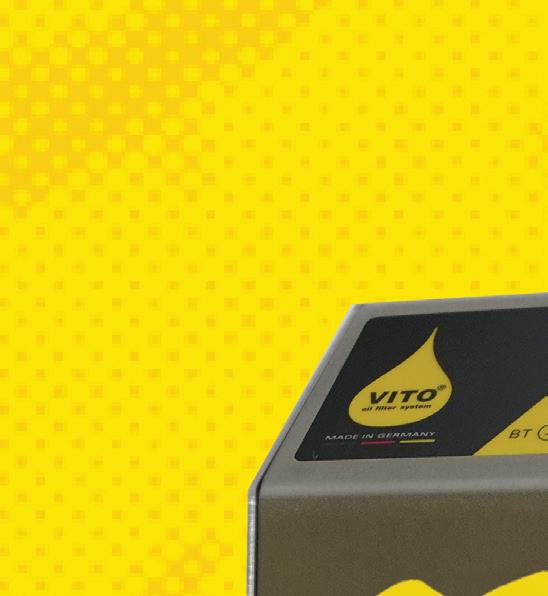



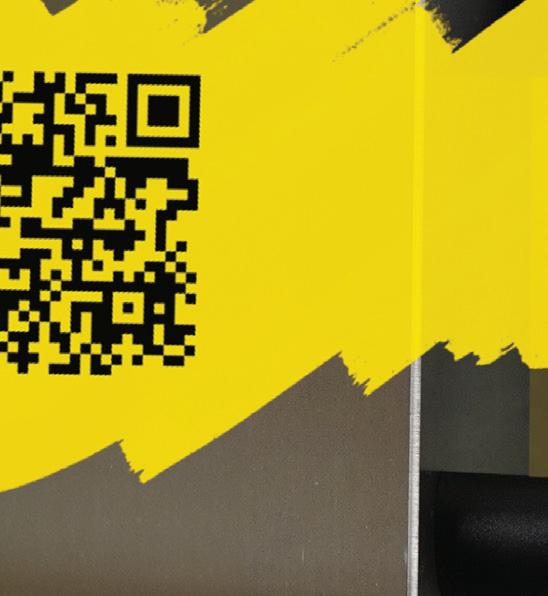
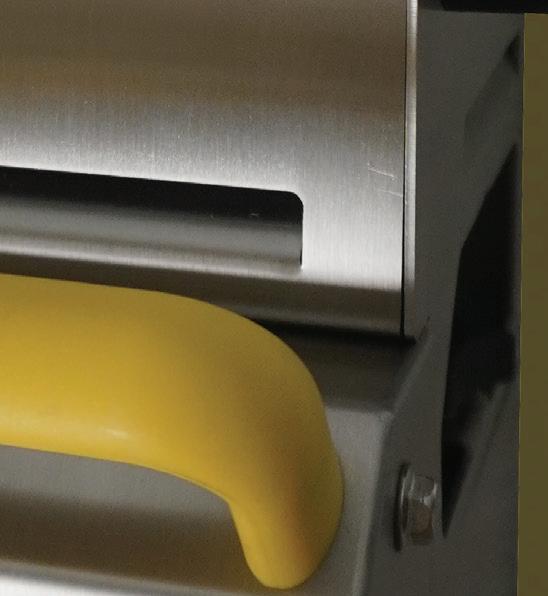












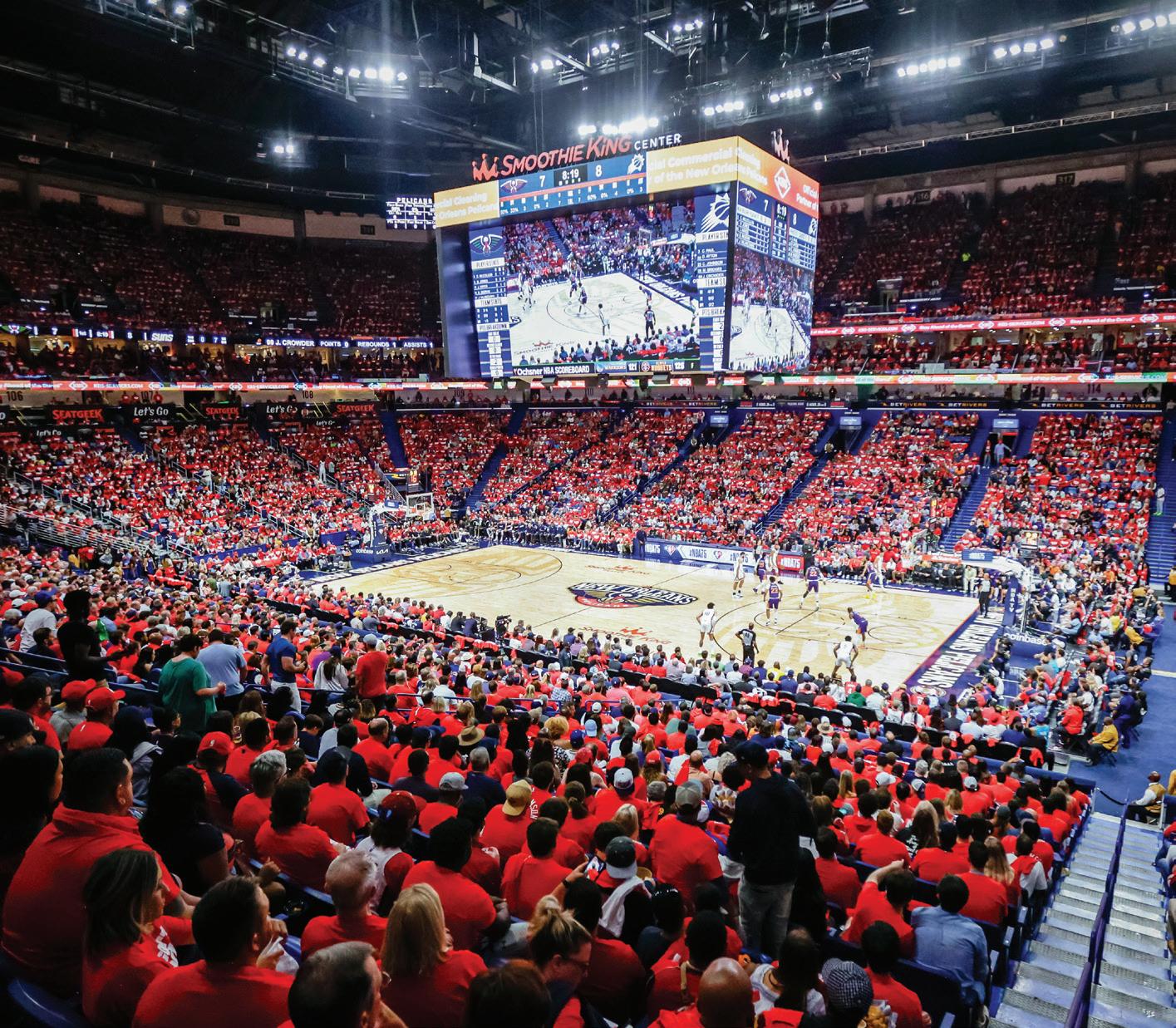
It’s a typical Friday night at Lake Mary High School in Orlando, Florida—after a packed football game, students and their parents shuffle down the bleachers and gather around Huey Magoo’s pop-up stand for the brand’s signature chicken tender meals.
Then, during a Florida Panthers game at the Amerant Bank Arena, cheering Cats fans leave the stands and stop by Huey Magoo’s fully branded concession area for a “Cats Win, You Win” BOGO tender deal before returning to the ice rink.
The fast-casual chicken concept has multiple sports partnerships under its wing, spanning high school, collegiate, and professional.
For president and CEO Andy Howard, the numerous brand activations and community engagement efforts that come with sports partnerships lead back to a central point: bringing consumers back into brick-and-mortar locations.
“Ultimately, with any of these deals, it’s all about bringing people back into our restaurants,” Howard says. “We want to sell tenders, and we expose them to our brand in the stadiums, which is fine, but everything we do has to relate to getting sales back into the restaurant.”
Originating in Central Florida, the brand has found its niche with Floridian sports teams, which is both an organic development and strategic move in terms of customer demographics and unit locations.
Dozens of Huey Magoo’s stores encircle where the Panthers are physically and where their season tickets sell, and billboards line the surrounding major highways, which all say “[ Huey Magoo’s] is The Official Chicken Tenders of the Florida Panthers.”
Inside Amerant Bank Arena, digital monitors display the brand’s advertising even during the off-season, making it a lucrative marketing push during concerts, circuses, and special events unrelated to the games.
“It’s unbelievable when you catch our name right out in front of 50,000 or more people. It’s selling franchise opportunities ... and all the marketing pushes people to come back into our stores. We’ve made a big commitment to seeing how we can piece different marketing elements together and evaluate the promotions each year,” Howard says. “It’s been a huge win for us.”
Smoothie King, the world’s largest smoothie fast-casual concept, finds that aligning sports partnerships with a shared mission helps reinforce the brand’s identity and provides a platform for athletes to promote its Clean Blend’s Promise.
The brand currently holds major partnerships with the Atlanta Hawks, Dallas Cowboys, and New Orleans Pelicans. A major sponsorship placement includes the Smoothie King Center in New Orleans, Louisiana, home of the NBA’s New Orleans Pelicans.
According to CMO Marianne Radley, these relationships developed naturally. Smoothie King was founded in New Orleans, its headquarters are in Dallas, and the brand’s third-largest market is Atlanta, home to over 75 franchised locations across the metropolitan area.
“Our focus is to inspire people to live a healthy lifestyle, and that’s at the core of all of our partnerships,” Radley says. “We wanted to make sure we’re not only tied in with these cities that are so vital to the success of Smoothie King but also find ways to resonate with what our company stands for.”
With placements like the Smoothie King Center, Radley finds benefits in c onnecting the brand to the










Savory Fund has spent hundreds of millions of dollars on quickly rising restaurant concepts, and the decisions behind where to put that capital are never easy.
ANDREW AND SHAUNA SMITH WERE IN RESTAURANTS LONG BEFORE THEY HELPED START SAVORY FUND.

SAVORY
Based near Salt Lake City, Utah, Savory launched a $100 million fundraise in 2018 and closed in October 2020. Fund II closed at $100 million in 2021. The company recently launched a third fund, this time with a value of $200 million. Along that journey, the company has built a collection of 11 concepts— Swig, R&R BBQ, PINCHO, Via 313 Pizzeria, Mo’ Bettahs, 86 Repairs, Saigon Hustle, Hash Kitchen, The Sicilian Butcher, Houston TX Hot Chicken, and South Block. Some are fast casual; others are casual dining. Cuisines range from chicken and breakfast to Vietnamese and Hawaiian.
All of it may never have happened if married couple Andrew and Shauna Smith hadn’t taken some risks more than 15 years ago. Or as they passionately call it, a few “moonshots.”
It was 2007. Shauna loved being a mom, but she knew there was something more she wanted to do with her time and energy. Hailing from the South—with hospitality and serving others part of her core identity— opening a restaurant was chosen as her next challenge. The couple opened a Kneaders Bakery & Cafe unit in Lehi, Utah, in October 2008, right in the middle of the Great Recession.
“The worst time anyone could open a restaurant,” Shauna recalls. “And yet we had people flooding into our restaurant. We were having great success and also having a great time. And I didn’t know at the time that I actually didn’t know a ton about running a restaurant. All I knew was that I loved the work. I am Southern. So hospitality is naturally in my DNA, and it came very natural to me to be inside the four walls of the restaurant, to be shoulder-to-shoulder with the team, working with the team and the guests, and preparing food. I love serving people through food and that’s really where it began.”
Meanwhile, Andrew was busy dealing with the cyclical nature of the tech industry. He went through the dot-com bubble in the early 2000s and survived. He managed through the 2008 crash as well. In between these years and devastating economic occurrences, Andrew started and sold companies, but couldn’t help but notice the stability Shauna was experiencing in the restaurant.
So he decided it was time for a career switch.
“I called up Shauna and said, ‘I think that I’d like to join you in the food and beverage industry,’” Andrew says. “She said, ‘Yeah, come on in. My dishwasher called out so you can wash dishes.’ And so I’m like, ‘I got this.’ About two hours into my first shift, I thought I just screwed up my whole life. What am I doing? But it took me only a couple days to get stung by the bee like Shauna.”
The first goal post was opening five locations. Once that was achieved, the possibilities kept getting higher. Under parent company Four Foods Group, Andrew and Shauna developed 50 Kneaders in multiple states, operated more than 70 Little Caesars restaurants in the Southeast, and invested in three up-and-coming Utah-based chains—Swig, R&R BBQ, and Mo’ Bettahs.
To Andrew, the main driver was job opportunities during a recession. He remembers people applying for roles who had been in boardrooms and served as CEOs, and others who simply needed to put food on the table. Throughout its run, Four Foods Group earned more than $1.2 billion in sales and was named one of the fastest-growing restaurant operations in the
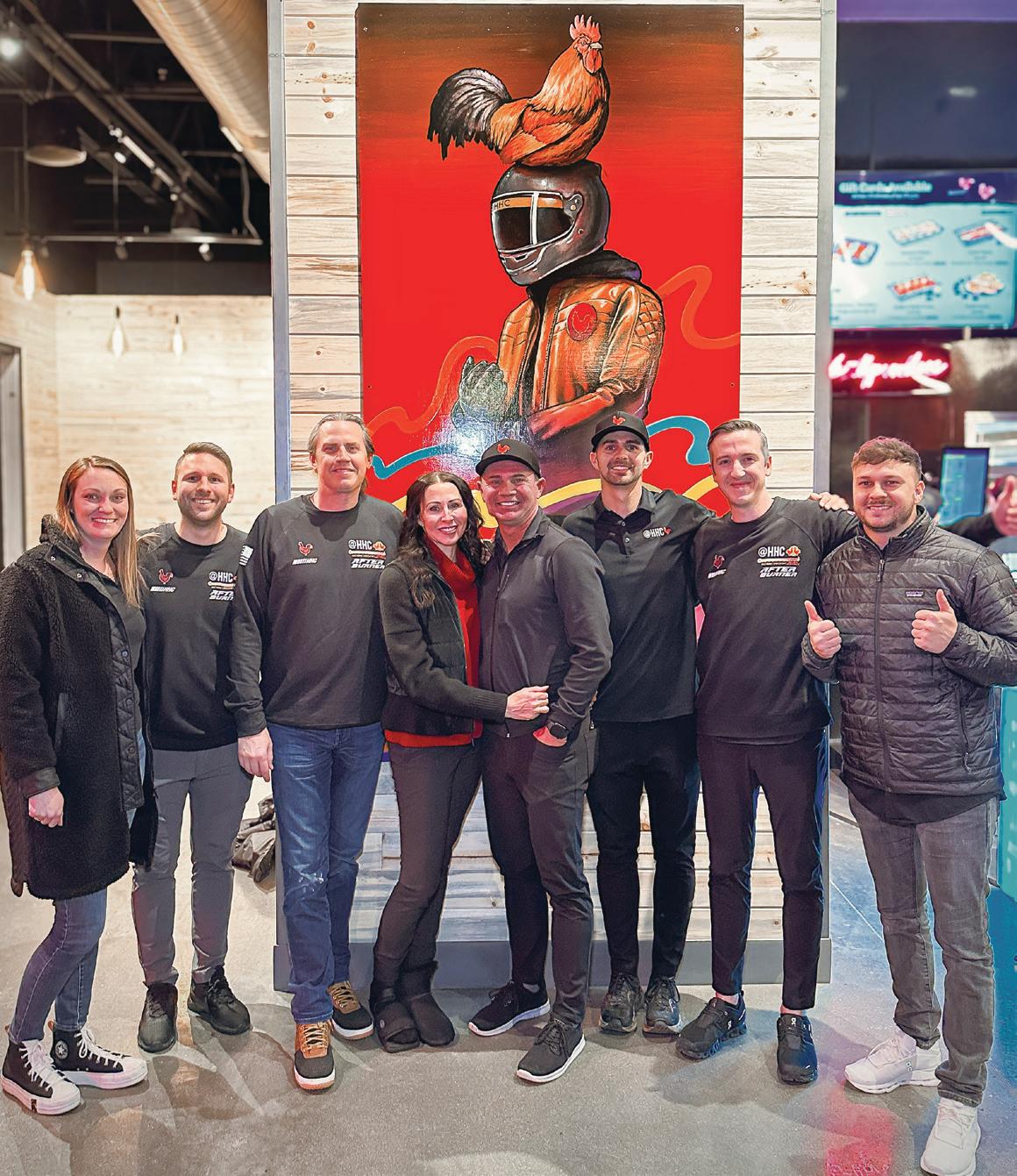
U.S. for two straight years by Restaurant Monitor.
“It’s been really good to us and it’s been really, really fun to do,” Andrew says. “Has it all been up into the right and perfectly green? No. There’s been some failures along the way that have really taught us lessons that have made us stronger. And then we go through a worldwide pandemic and that taught us a lot as well.”
Andrew and Shauna realized the difficulty of funding growth, especially with banks not willing to take on that type of risk.
A new avenue revealed itself while Andrew was racing semipro for Porsche. He was rubbing elbows with CEOs of other tech companies and private equity firms, and one of them happened to be Greg Warnock from Mercato Partners.
“He is an oracle of an investor,” Andrew says. “And he said, ‘How is your business? And how are you growing and how are you financing it?’ And initially, it was like, ‘Well, it’s the Bank of Andrew and Shauna and then our local banks, so friends and family of Andrew and Shauna.’ But either way, he said, ‘Well, have you ever thought about standing it up as a private equity fund, putting your money in that? And also clubbing together other high net worth individuals and family offices and other things?’ And I said, ‘No, I haven’t thought about doing that, but it would be a lot easier.’”
At the time, Warnock had been in the business for decades. He had the proper backbone and institutional knowledge that


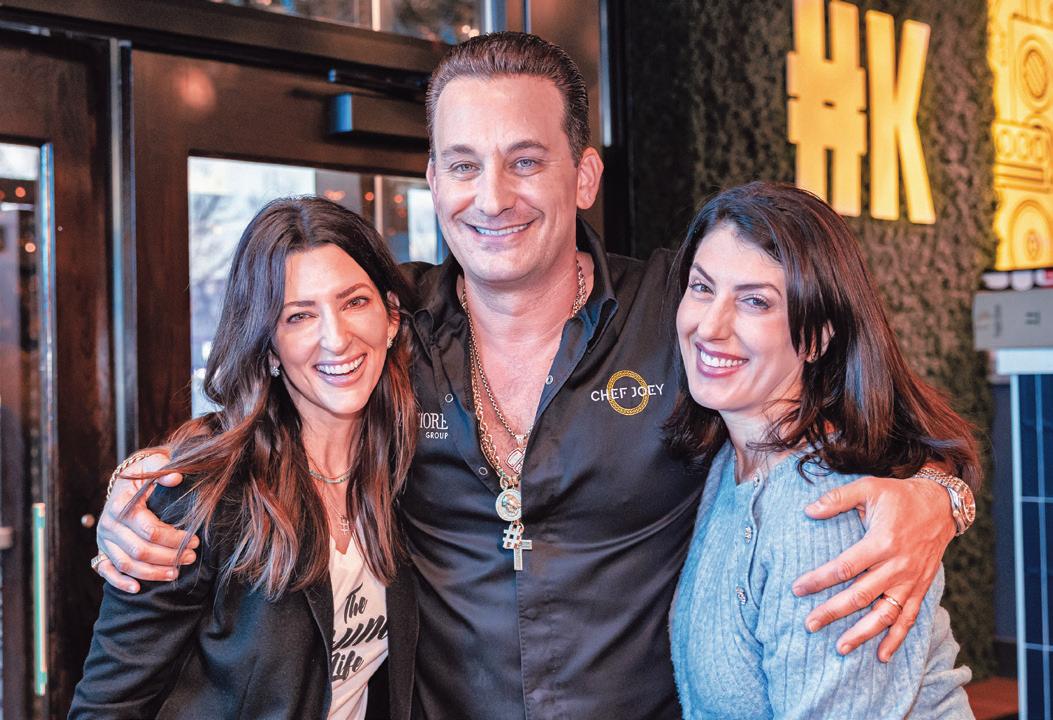






































































































































































Andrew and Shauna were looking for. He invited the couple to join his firm, where they partnered to stand up Savory. The duo had five assets when the fund began ( Kneaders, Little Caesars, R&R BBQ, Mo’ Bettah’s, and Swig), but they decided to sell their franchise operations in the first two concepts and double down on corporate ownership.
Warnock and Andrew serve as managing directors of Savory while Shauna works as CEO. They are joined by dozens of food and beverage veterans who supply years of combined experience to invested restaurants. Andrew refers to it as an “army that gets into the trenches with these [restaurant operators]. When they’re crawling, we get them to walking and then we help them run.”
Savory focuses on brands that are excelling above the rest of their peers, according to the couple. Andrew understands that he could enter a community and visit 35 taquerias, but he also knows that only so many of them could become the next Velvet Taco or Torchy’s Tacos. They want to walk in and feel an “it” factor—not just food quality, but the sights, sounds, and smells. The dollars matter too. Stores have to be performing better than competitors in terms of revenue and margin. It can’t just be high sales figures with minimal margin. From experience, Andrew and Shauna know how tough it is to run that type of business.
sumers will patronize those concepts frequently. Savory wants to buy into brands where the visitation is at least once per month and the ticket average isn’t so high that someone can only afford to visit every quarter or six months.
Andrew and Shauna receive inquiries all the time from people who say they should take a look at a restaurant in a certain neighborhood. Sometimes that’s all it should be—a community fan favorite.
“ WHEN WE MEET WITH PEOPLE AND IT’S NOT A FIT BECAUSE ALL THEY CARE ABOUT IS MONEY OR SOMETHING LIKE THAT, THEN IT’S NOT REALLY A FIT FOR US BECAUSE THE JOURNEY IS LONG AND HARD AND IT’S GOT TO BE ABOUT OTHER THINGS THAN THE MONEY”
“You don’t want to mess it up. It’s not scalable,” Andrew says. “It’s too hard to scale something like that. It should just stay the two or three or four units that it is. There’s a lot of brands like that and when people say we want to grow this, we’re quick to be the ones that say, ‘Please don’t. This is a great lifestyle business. You’ve got a great product. You can’t scale this.’ So we always advise people when they shouldn’t scale.”
Within Savory’s portfolio, some chains are corporately run and others grow via franchising. For instance, Swig—a dirty soda brand—unveiled its franchising program in early 2023 and had 250 units enter the pipeline in six months across Florida, North Carolina, South Carolina, Tennessee, Arkansas, Missouri, and Idaho. Mo’ Bettahs is growing with nearly 50 company-owned units.
Arguably, the top consideration is founders and partners who share a similar philosophy.
“When we meet with people and it’s not a fit because all they care about is money or something like that, then it’s not really a fit for us because the journey is long and hard and it’s got to be about other things than the money,” Andrew says. “So the partners are a big part of it.”
Shauna adds that whatever the product is, it needs to have whitespace. The chain may be in one or two geographies when Savory invests, but there has to be a runway to bring the offering to the masses. The fund doesn’t ask for teams to be perfect. However, being growth-minded, humble, scrappy, and hardworking are all tablestakes. Andrew and Shauna figure if operators are built this way beforehand, that will continue after a capital injection.
“We don’t mind complex, but it needs to be scalable, and sometimes overly complex is not scalable,” Shauna says. “And when I think about what makes it overly complex versus just complex, it can be as simple as how chef-based the recipes are or how employees have to be very specialized versus generalists. So those are the things that you’re saying, if you and I can’t do it, it’s probably not scalable.”
While COVID has shown how resilient restaurants can be, it also proved the industry is capable of being extremely unforgiving. That’s why Savory prefers not to invest its dollars in white tablecloth establishments. Andrew and Shauna enjoy fine dining and being showered in service, but there’s inherently more risk and it’s harder to expand. Also, a smaller segment of con-
The decision of whether to franchise a brand starts with a question that Shauna and Andrew ask themselves: Would we franchise it? That’s drawing on a background of operating more than 120 franchised locations across two chains. The two understand how it feels to have a franchisor impose guidelines that don’t make sense. That’s why the couple values building a strong corporate base that can be used to prove and test technology, menu items, and other matters before passing it along to operators. Andrew and Shauna also want to ensure data shows restaurateurs’ margins are large enough to bring quality of life and cash flow to pay off bank financing. If those economics don’t work, then a concept shouldn’t be a franchise.
“There’s too many people that take franchising and say we’re going to franchise so that we don’t have to raise money,” Andrew says. “They take the money from the franchisees, they live on that money, and if they’re not selling franchises, they’re dead. We believe, build an organization to support yourself and be self-sufficient. And then the franchise should be the cherry on top when the other way around is what most people do. I think it’s death by 1,000 cuts for a lot of those brands.”
Andrew and Shauna’s motivation to help others led to a Million Dollar Restaurant Launch in 2021. Savory sought to assist an independent operator who may have lost their unit during COVID or was trying to get a concept off the ground. As Savory continued to get bigger, onlookers expected the company to do more for the industry.
“You guys are getting bigger and going further up the stream

It is no secret that COVID had massive impacts on the foodservice industry. Business closures, sta ng shortages, and unpredictable demands contributed to essentially breaking foodservice supply chains. The good news is that companies now have a golden opportunity to solve supply chain issues that were uncovered as a result of the pandemic.
C.H. Robinson’s Restaurant Solutions team helps customers drive transparency and implement optimization activities throughout the supply chain. Here are four ways to bring benefits to your business in 2024:
Historically, restaurant supply chains focused on distribution centers (dc) to store, with most upstream activities being opaque and rarely considered in logistics planning. This lack of visibility and control hindered restaurants from making informed decisions in alignment with their goals. Taking control does not mean taking away—and providers can retain good supplier or DC managed solutions while implementing inbound programs. Holistic inbound management represents significant opportunity to reduce waste and capture savings through increased transparency and oversight.
Gaining visibility and control further upstream is the critical first step in establishing a winning strategy. What is your inbound strategy, and does it support your supply chain objectives?
On-time, in-full (otif) orders to store locations are crucial to optimize revenue and drive customer loyalty. With signature menu items and limited-time offers, out-of-stocks create negative consumer experiences that are frequently shared on social media. With no visibility to inbound logistics, the component of on-time becomes challenging to manage. The in-full part of OTIF can be even more difficult to execute without visibility to quantities ordered, shipped, and received. This comes from connecting suppliers and distributors on a shared technology platform and illuminating supply chain nodes to deliver real-time information. Measuring suppliers and distributors and holding supply chain partners accountable via a shared model of
BY ADAM DRISCOLL: DIRECTOR, STRATEGIC ACCOUNTS, C. H. ROBINSONtransparency is the core of strategic networks. Attaining item-level visibility and control increases overall OTIF performance.
We can’t emphasize enough the importance of item-level visibility for success in today’s competitive landscape. Consumers want options and new ingredients, creating the need for “experiences” both online and in-store which can drive supply chain complexity. Meeting demands means having the ability to orchestrate complex supply chains seamlessly.
Item-level management requires cost component visibility—freight on board, transportation, warehousing, and more. With visibility, decisions can be made whether to flow goods from supply to DC or leverage re-distribution options. Re-D is a powerful tool enabling inbound freight optimization while keeping the right amount of inventory at DCs. To achieve optimal flow for each commodity in a network, providers should work with supply chain engineers who understand business objectives. These optimizations yield lower costs and better service for stores and franchisees too.
Supply chain engineering is the fabric that ties the above components together. Networks constantly evolve and therefore require constant attention and maintenance. History shows that providers with the ability to shift with market needs will survive and thrive, and this requires diligence and adherence to always look for opportunities to improve. The best engineering uses knowledge, expertise, and network optimization software to create the perfect state for the flow of goods. ◗
and you’re not taking care of the little guy,” says Andrew, remembering what some were commenting. “We have started as the little guys multiple times in our journey. Like Shauna said, we’re entrepreneurs. So we said, ‘Well, let’s support that segment as well.’ We want to make sure people know that we’re not going upstream. We’re going to stay within the entrepreneurial community of start-ups. Although our thesis is really to get involved in something that’s four, five, six units, and above where they have had several years of growth and they have some more data, we decided to do this. It might be the first of many that we do in the future.”
The competition received hundreds of applicants. Savory conducted Zoom interviews and many times sent teams to visit the restaurant. After combing through choices, the fund landed on Saigon Hustle, a concept run by best friends Sandy Nguyen and Cassie Ghaffar. The women’s objective is to offer a Vietnamese menu that’s approachable to anyone in the Houston metro area.
Shauna, reminded of her start in restaurants and her role as a mother and wife, was drawn to Nguyen and Ghaffar’s similar entrepreneurial spirit. They knew every detail of their restaurant and taught Shauna new things. Saigon Hustle currently has one location open. The second outlet was in the process of being built as of January.
“You are on fire already in all the best ways. And then we went and saw their first store and it’s so rad,” Shauna says. “They’ve got impeccable taste. The food was outstanding. It is something that everyone wants. Even if they don’t know they want it, they are going to want it. So I was a moth to the flame for those Saigon Hustle girls, and still whenever we are talking to them, meeting with them, they are an absolute joy and they’re brilliant. They are going to do great things.”
As Savory’s reputation grew, interest flipped to 90-95 percent inbound. The worst part of this, Andrew says, is that the fund can’t give money to everyone. Still, the company felt like it had so much more to send to the industry. So it created Restaurantology, a self-funded, annual conference exclusive to restaurant operators. At this event, Savory pulls its teams together to share the best tips and guide others on what’s working in the food and beverage segment.
Those in attendance are usually restaurateurs with two to 10 stores who are figuring out their next move. Andrew, Shauna, and other Savory leaders aren’t looking to be gatekeepers. Instead, they want to be transparent about their past successes and failures in hopes that it might set someone else on the right path, even if Savory can’t be part of it.
In 2023, the conference touched on relevant topics like supply chain shortages, labor issues, raising capital, and building the right team.
“If we can’t give them the leg up of funding, at least we can give them some of the knowledge, and that is really where Restaurantology came in,” Andrew says. “But also there are some brands, they didn’t make the cut necessarily for an investment, but we’re on their speed dial. They call us with little special questions and circumstances where they’re like, ‘Hey, can I just get your ear for 15 minutes?’ And that’s also how we can continue to foster these relationships. And you know, there have
been some that kept us on speed dial and ended up becoming an investment because we did see them continue to grow and thrive through the years.”
Savory isn’t a fund that puts money in and waits for a return in five or six years, Andrew says. The company gets into the details with the restaurant brand and works shoulder-to-shoulder with them. These chains are already profitable, and Savory is overlaying a playbook on how to transform managers into better leaders, optimize balance sheets in regard to contracts, food pricing, and labor models, and use marketing strategies to build revenue.
In the future, Savory will focus on chains that provide convenience and give consumers value for their dollars. Having a source of entertainment is also key. The trick is balancing these aspects with the proper food quality. Simplicity has become of utmost importance as well, especially during the pandemic when operators were forced to cut costs. Shauna uses the example of Raising Cane’s, a fast-casual restaurant that’s grown rapidly in recent years just by offering chicken, toast, and fries.
“We’re talking a lot about how our experience in the restaurants has gone downhill in the last few years and the service is just not the same,” Shauna says. “And my belief is that people want hospitality back and hospitality is different from service. Service you can get anywhere. But hospitality is how you make people feel when they are inside the restaurant or even when they’re getting takeout or a third-party order. I don’t have the answer to how we’re going to do this, but I have a feeling that there’s going to be a return to hospitality in the next year or two just because we are all feeling the lack of hospitality.”
If a chain is looking for capital, Andrew says they should first determine if their house is in order. He means, are sales, traffic, and sentiment growing? Are reviews solid and getting better? Is the brand unique in the competitive backdrop? All of those questions don’t need a yes, but a majority of them do. It would be hard for a firm to invest otherwise. As Andrew puts it, “a special butter that you get from Iceland” is not going to be enough to set a brand apart.
The other crucial part is knowing if you want a lifestyle or legacy business. Andrew wants to be clear—there’s no shame in choosing the first one. One could have a restaurant that works well at two to five locations and is enough to be an institutional player in a particular region. For some, that’s enough, and that’s more than OK. If choosing legacy, one has to be prepared for change and growth. Those who remain stagnant aren’t going to succeed. Savory comes into the picture to secure an evolution, and so would any other private equity firm.
“We always ask people, ‘Well, are you prepared for the legacy journey?’” Andrew says. “Because the legacy journey is more people touching your baby. More people telling you that maybe your baby is ugly and that you have to do this to make it look better. And that’s uncomfortable for some people, and some brands can’t go through that. Make sure your house is in order and make sure that you decide, do you really truly want to be a legacy business?”
Ben Coley is the editor of QSR. He can be reached at bcoley@wthwmedia.com
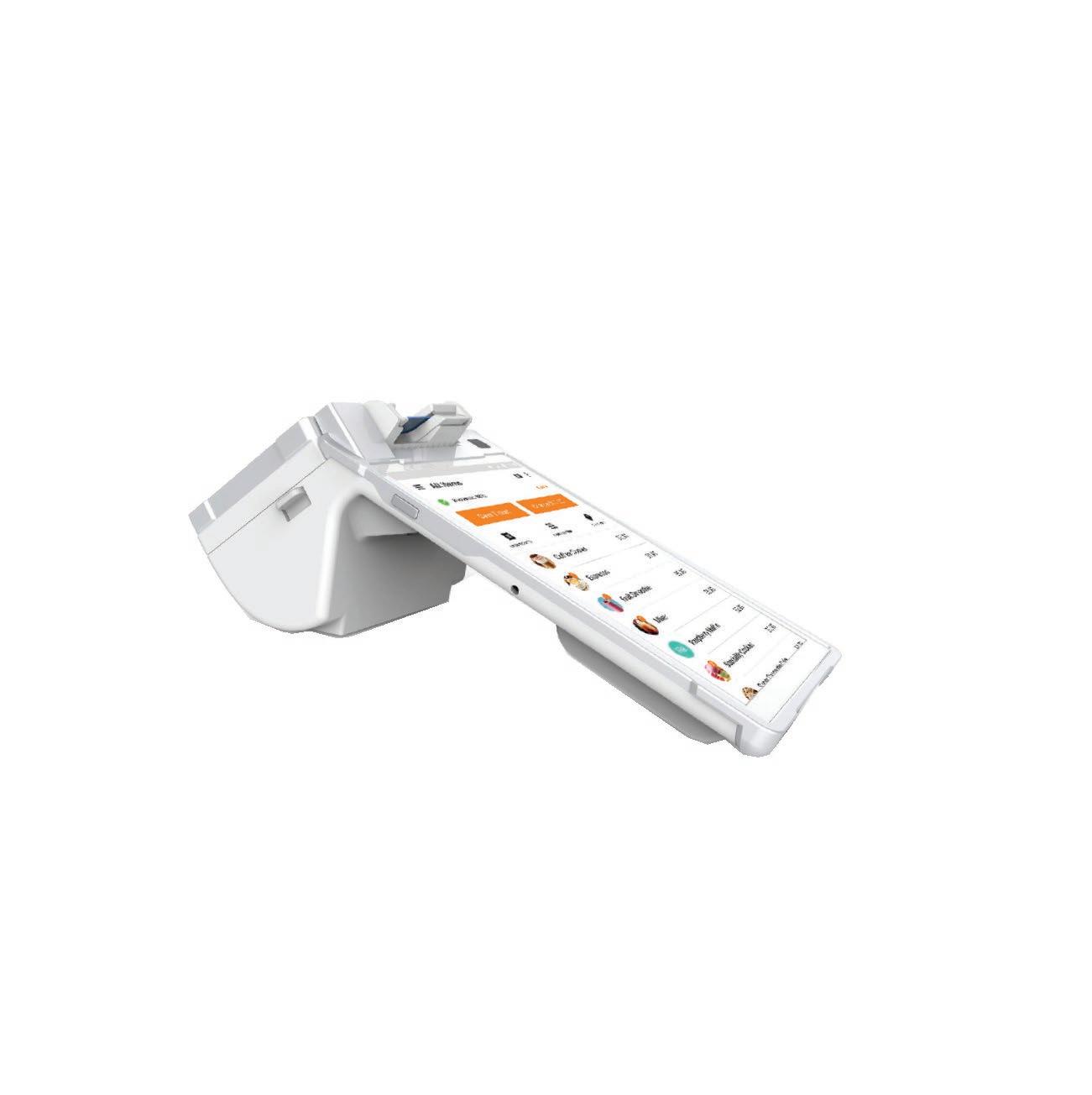





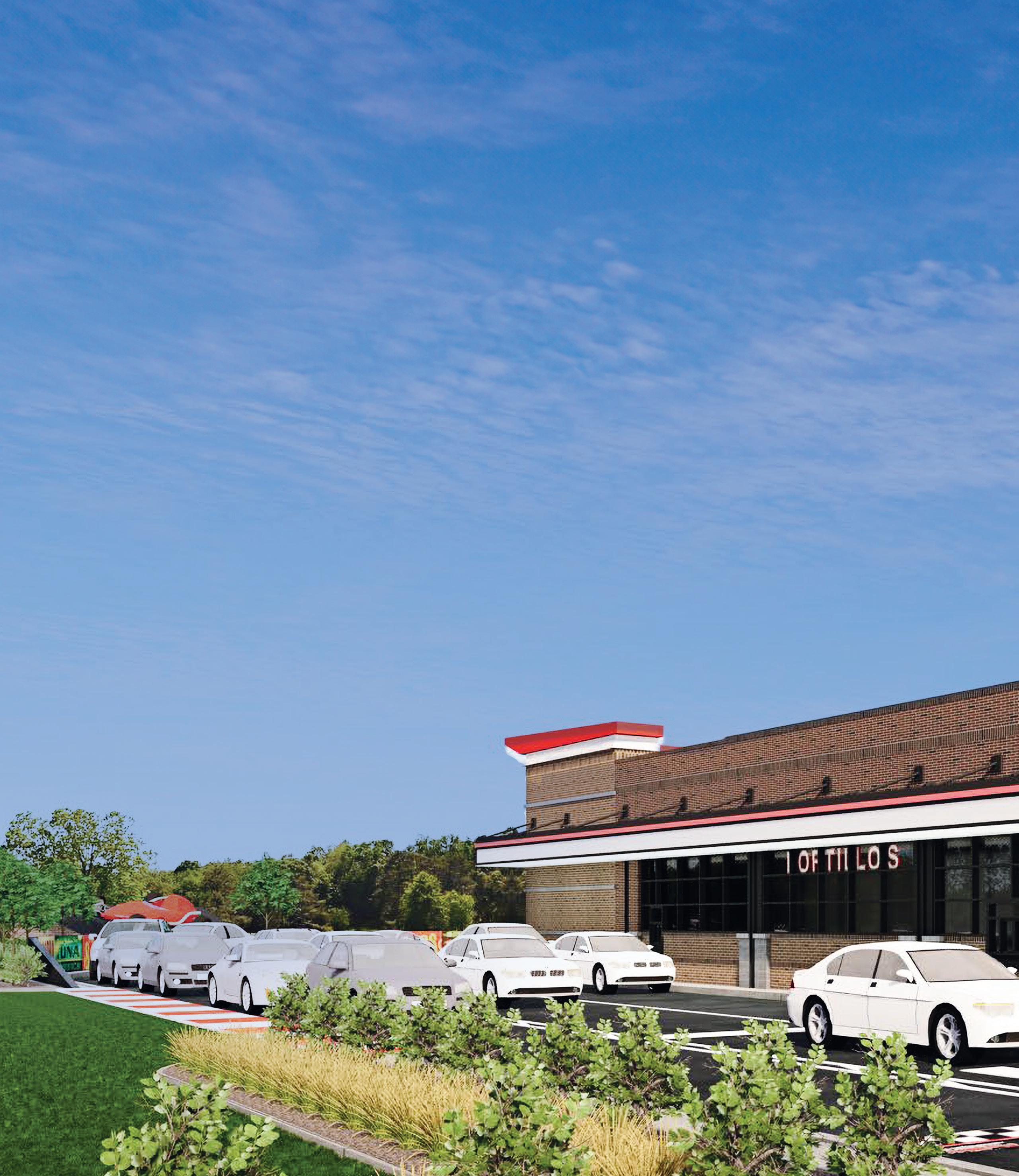
From square footage to staffing levels, restaurants are aiming to do more with less.
/ BY SAM DANLEYUntil recently, if you peeked behind the counter at a traditional Portillo’s location, you’d find employees shuffling back and forth from one end of the large linear kitchen line to the other. There may have been a cook bouncing from the fry station to the freezer and back just to grab the next batch of onion rings or walking 15 feet to the outside expo area to send food to the drive-thru.
The company is now focused on optimizing new builds by eliminating those unnecessary steps, which CMO Nick Scarpino calls “needless conveyance.”
“Historically, our kitchen has featured a long line with a lot of movement, so it was taking team members longer to create that Chicago-style hot dog,” he says. “When you think about the fact that we sold 11 million hot dogs last year, the time needed to take those extra steps really adds up.”
With the costs to open and operate a restaurant remaining elevated, right-sizing the footprint and increasiwng efficiency are priorities for most quick-service brands. Whether it’s square footage,

staffing levels, or the steps workers take to fill an order, operators are aiming to do more with less.
Portillo’s started building slimmed down stores last year, introducing a 7,800-square-foot model with a 67-foot kitchen line designed to boost productivity. It’s significantly smaller than legacy restaurants, which run as large as 11,300 square feet with a 107-foot kitchen line. Scarpino says the shrinkage comes from small adjustments that culminate into big efficiencies, like bringing salads over to the main production line, moving the beverage station into the dining room, and placing coolers near prep stations for faster restocking.
The smaller store carries a lower overall buildout cost, and the savings haven’t come at the expense of volume or revenue. The average buildout cost for new units last year was around $6.2 million to $6.5 million versus $7 million in 2022. An even smaller prototype called the Restaurant of the Future already is in the works and is expected to shave another $1 million off that price tag. Starting next year, that model will shrink the footprint to around 5,500 to 6,000 square feet with a 47-foot kitchen line.
“We see this as having less to do with making our kitchen smaller, and more about transforming it into a more efficient space for our team members,” Scarpino says. “Any changes that we make to our restaurants are improvements designed with our team and our guests in mind.”
The Restaurant of the Future will incorporate learnings from the class of 2023 stores, which already used lessons from existing locations that were retrofitted with smaller kitchens, he adds.
Portillo’s is taking a similarly iterative approach to value engineering its pickup-only prototype. The first version opened in early 2022 with strong results, but executives felt it was bigger than it needed to be, so they scaled down the second location that opened late last year. Now, they’re seeing more walk-up traffic at that store and are adjusting the next location accordingly.
“We’re constantly reviewing what’s working and what’s not, so we can easily identify any areas where we could improve the design moving forward,” Scarpino says.
That doesn’t mean Portillo’s will be ditching the dining room altogether. It views the to-go prototype as an infill opportunity and traditional units as the primary growth driver. Still, the
Restaurant of the Future will have fewer seats for dine-in customers and a stronger focus on off-premises orders with more direct drive-thru access and easier entry for delivery drivers.
“One-in-five orders come into our restaurant digitally and are consumed off-premises, and a significant portion of our business flows through the drive-thru, so the Restaurant of the Future supports our current mix while also planning for how that may change in the future,” Scarpino says.
From multi-lane drive-thrus to digital-only designs, restaurants are creating stores that use space more effectively toward the channels that generate the most business. Some brands have done away with more than just the dining room. Whataburger last year jettisoned the traditional drive-thru with a new prototype geared toward kiosk and mobile ordering, while Chick-fil-A started testing a walk-up concept that caters to foot traffic. Chipotle has a digital-only restaurant with no guest-facing frontline or inside access for customers.
Wendy’s spent several years redesigning its traditional layout to increase the efficiency of delivery and digital pickup. Those efforts led to the launch of the Global Next Gen prototype last year. The restaurant still offers in-store seating but features a kitchen engineered for digital capacity and a building optimized for an increasingly omnichannel world.


The new design unlocks efficiencies in a couple of ways. It can be built on a quarter- or half-acre plot of land. It comes with lower investment costs and reduced energy expenses, thanks to more efficient and ecofriendly building materials. It also provides labor improvements that add up to valuable savings for operators—all while enabling up to 400 times the capacity for digital orders.
“Global Next Gen has helped us mitigate the rising costs to build, where inflation would have had a far worse impact than if we had not had our continuous commitment to value engineering,” says Abigail Pringle, president of international and chief development officer at Wendy’s. “Not only does the new design optimize costs, but it sets the stage for better financial returns and throughput for our franchisees.”
Wendy’s used performance data from layout simulations as well as input from operators to ensure the store supports faster order fulfillment. Key features include a walk-up window and dedicated parking for delivery drivers, a pull ahead spot that allows employees to advance cars forward to eliminate longer wait times at the pickup window, and a convenience door that opens directly from the back of the house for quick crew member access to customers in the pull ahead spot.
“The improved customer flow diverts traffic from the drive-thru, improving wait times

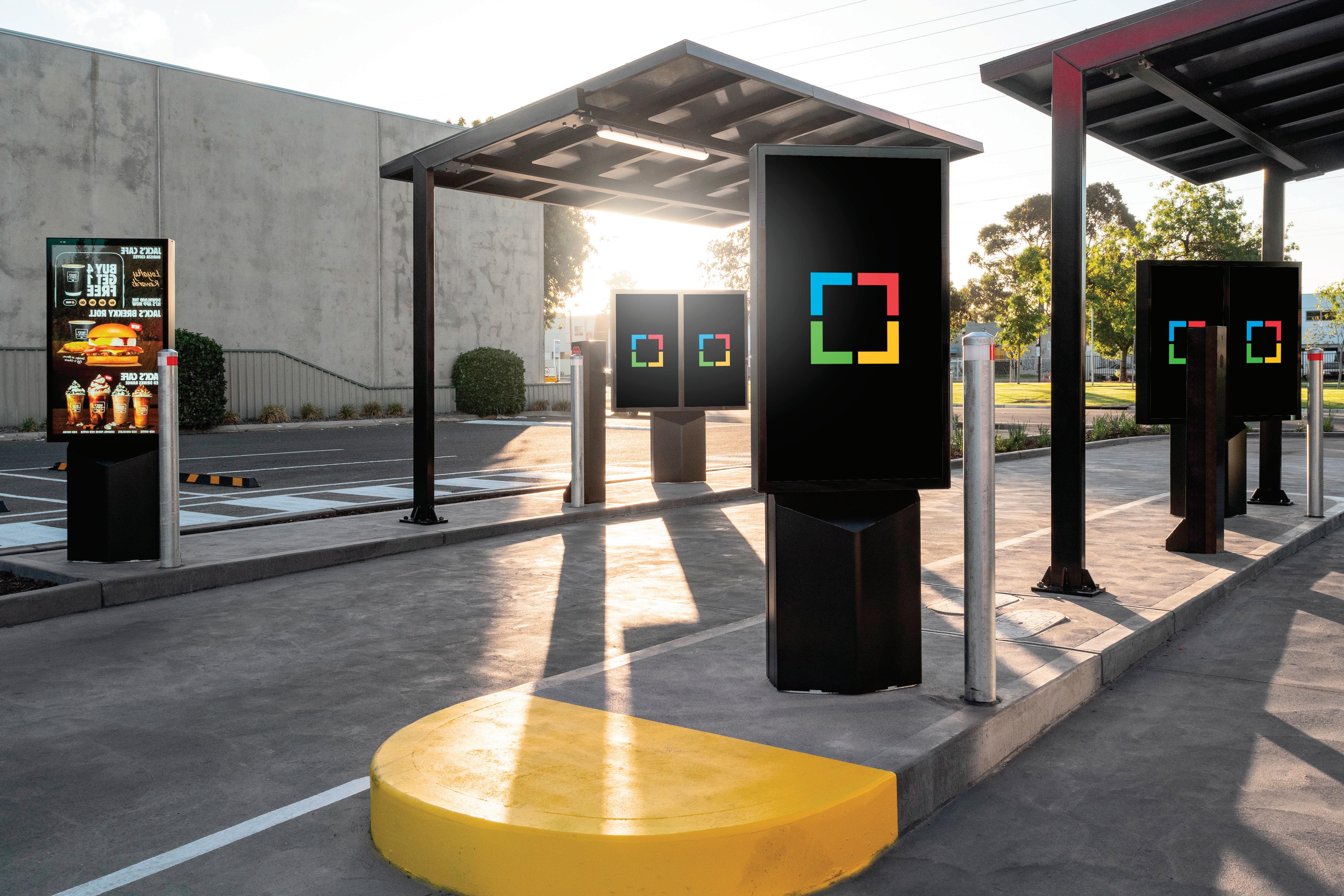
and streamlining order pickup for team members,” Pringle says.
The restaurant also has self-order kiosks as well as pickup shelving that allows customers to bypass in-store queues. There’s a galley-style kitchen that runs from the front to the back of the store. It features custom equipment designed specifically for compact spaces.
The Global Next Gen layout facilitates higher volumes by bringing essential functions closer together. Supply areas are situated above and adjacent to assembly areas. The front counter and pickup window are positioned near the coordinator stations, with drink, mobile carryout, and delivery pickup stations only steps away. The added proximity minimizes labor requirements while improving line-of-sight among staff, which Pringle says leads to faster service and better coordination.
“Overall, the Global Next Gen design offers improved flexibility in staffing while cutting down steps for crew members,” she says. “Crew can seamlessly transition between different positions, adapting to changing customer flow and demand. This nimble staffing approach helps ensure the restaurant operates at peak efficiency, regardless of fluctuations in customer traffic for a more efficient labor model.”
Additionally, Wendy’s created what it calls the Global Next Gen High-Capacity Kitchen to help stores with the strongest customer demand handle more drive-thru and digital volumes. Pringle says the kitchen design delivers a nearly 50 percent increase in throughput compared to a standard Global Next Gen restaurant. It has a dual-sided kitchen layout with additional sandwich production areas, space for digital orders, and more prep area. It further reduces travel distances for crews with strategically placed front counter, drive-thru, and expanded storage capacity to enhance overall operational flow.
Wendy’s finalized the high-capacity kitchen and debuted the first Global Next Gen builds last summer. Its goal is to open more than 200 locations featuring the design throughout 2024.
The new model is steadily making its way into other countries, including the dual-island nation of Trinidad and Tobago, where it landed in the form of a prefabricated shipping container restaurant last fall. The modular unit was manufactured stateside, shipped by sea to its final destination, and assembled on-site in a process that significantly reduced the overall construction timeline.
Speed-to-market is a key advantage for brands that add prefabricated units to their portfolios. A growing number of emerging brands are embracing them as a key differentiator, but the heightened need for expedited development is sparking a fresh wave of interest from larger, more established chains. Domino’s, Checkers & Rally’s, Quiznos, and Taco Del Mar have all been testing the waters with modular designs lately.
Little Caesars added its name to the list late last year when it launched a new POD program featuring prefabricated units that utilize recycled walls. The buildings are constructed by a company called Kitchen Podular in Las Vegas and then transported to the restaurant location by a semi-truck. Additional elements like the front glass facade, signage, equipment, a walk-in cooler that’s attached to the back of the store, and a self-service mobile order pickup station are added on-site.
Interest in the prototype has been growing among franchisees since the first location opened in Iowa in December, says Bryan Ketelhut, national director of nontraditional development at Little Caesars. The company is still in the early stages of fine-tuning the program, but he says it’s clear it will unlock significant savings for operators.
Costs to open a Little Caesars restaurant typically range from $475,000 for an in-line unit to $1.5 million for a larger freestanding unit. Based on the initial POD location, the program offers franchisees a smaller version of a traditional freestanding unit for around $150,000, not including site work.
The most important cost-saving aspect of modular development is the speed with which the building can be completed. Since manufacturing and site work occur simultaneously, projects can be completed in up to half the time as traditional construction. That means a franchise owner can ramp up operations and start realizing a return on their investment quicker.
“It takes around 90 days to manufacture the building offsite, so a franchisee can be developing and doing all the ground work at their location while the POD is being built,” Ketelhut says. “Typically, with a stick-built restaurant, you have to complete all of that site work first before you start construction, so you’re really getting to market a lot faster with a POD location than you would with a traditional buildout.”
The prototype boasts a smaller footprint and requires less land than a traditional unit, another advantage in today’s competitive real estate landscape. While a typical freestanding Little Caesars store demands about an acre of land for construction, POD restaurants can function on as little as a quarter acre, so the program is helping expand opportunities for franchisees to secure suitable locations, too.
“Sometimes it’s not easy to find and acquire or lease a oneacre parcel of property, so a quarter acre opens up a lot more opportunities,” Ketelhut says. “There are a lot of brands that compete in the same size spaces that we do, but there’s only so many 1,400-square-foot end-cap retail units out there. When you have multiple brands competing for those, you have to start thinking outside of the box. You have to be willing to evolve in order to be able to play in certain trade areas.”
The POD prototype complements Little Caesars’ streamlined business model, which already requires a relatively low level of labor, and the modular unit’s efficiency is underscored by its minimal staffing requirements, he adds. The restaurant offers the same full menu as a typical store but requires only 2 to 3 employees to operate the entire facility.
“The biggest challenge is probably going to be the size,” Ketelhut says. “The franchisee that built the first POD is a really sophisticated multi-unit operator, but most of their locations are within the 1,500-square-foot range, so they’ve been learning how to train their staff to operate in a 1,000-square-foot space instead. That’s really the key, because as long as you’ve got the right staff that knows how to operate in a more compact space, it’s 100 percent possible to earn the same amount of dollars in a smaller prototype.”

®

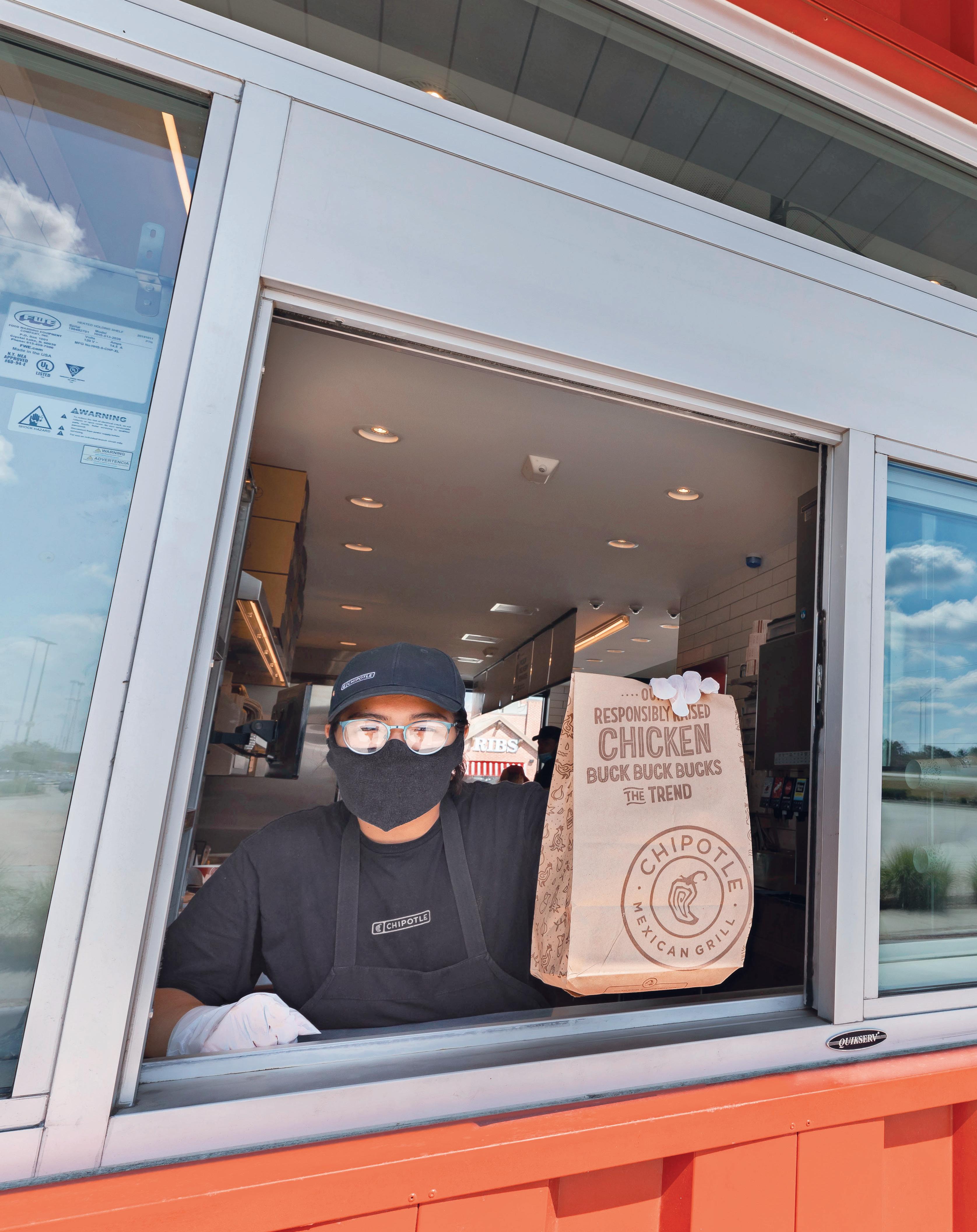

In an era where technology intertwines intricately with daily life, quick-service restaurants have witnessed a paradigm shift in how services are delivered and experienced. The evolution of drive-thru and menu board technology stands as a testament to this change, propelled by consumer demands for efficiency, personalization, and digital integration. The multifaceted aspects of technological advancements in the quickservice restaurant industry highlight the challenges, solutions, and future prospects that define the modern drive-thru experience.
Consumers demand more than just fast service; they seek a drive-thru experience that is not only quick but seamless
“Consumers place a premium on accurate, up-to-date, and viewable menu options at all times of the day, which can be hard to deliver with outdated systems.”
and digitally enabled. “Consumers place a premium on accurate, up-to-date, and viewable menu options at all times of the day, which can be hard to deliver with outdated systems,” says James Burdette,
senior director of the Enterprise Process Innovation Center at Panasonic Connect North America . Since outdated systems often fall short of delivering on these demands, a large gap has emerged that needs bridging to enhance customer satisfaction and loyalty.
The essence of the modern drive-thru experience is encapsulated by the need for personalization, diverse payment options, and integration with loyalty or rewards programs. “Quick-service restaurants can communicate to customers how their needs are being met by continuing to update processes and enable a dining experience where consumers can engage in their preferred manner,” Burdette says. This approach not only meets customer expectations but fosters a sense of fulfillment with each visit.
The adoption of commercial-grade monitors designed for outdoor environments is critical for the success of digital menu systems. “Using digital screens at the drive-thru order point is revolutionizing the ease of adding and changing new menu items, and dayparting the menu offerings between breakfast, lunch, and dinner menus,” says James Cullinan, CEO and president of National Sign Systems.
However, it’s not just about buying hardware and installing it. “Now it’s imperative the hardware or digital screen connects easily with software, loyalty programs, back office equipment, and the kitchen,” says Rodrick Glass, executive VP of business development, SME QSR, and C-store Solutions of Creative Realities Inc
Content management professionals play a vital role in designing menu layouts that maximize throughput, while the flexibility of digital screens revolutionizes menu management. “Customers expect

photos of products to enhance and speed up their selection process,” Cullinan says. “Digital menu screens provide unlimited opportunities to make changes on the fly in the fast-paced world of quick-service restaurants.”
“Voicebots, camera vision, ‘unattended’ payment, and digital menu board enhancements have all driven rapid changes in the drive thru,” says Chris Siefken, senior vice president of technology at Xenial . These technologies drive rapid change, setting new standards for the industry.
Operators are adopting dynamic digital signage solutions that enable real-time content updates. “Cloud-based systems enable remote management, making it easier to ensure content accuracy and relevance,” says Megan Zeller, senior director of business development for Peerless-AV
“Access to real-time data is revolutionizing the drive-thru experience by enabling businesses to make data-driven decisions
“Ensuring that operators get the most out of their drive-thru requires strategy and focusing on what they want to achieve.”
to improve operational efficiency and enhance the overall drive-thru experience,” says Corene A. Harley, director of operations at Uni-Structures. This approach allows for the optimization of service times, menu offerings, and customer engagement strategies, ensuring that the drive-thru experience meets the evolving expectations of today’s consumers.
To tackle technical issues and enhance system integration, operators are turning to user-friendly interfaces. “The implementation of AI-driven systems for order accuracy, automation in payment processes, and the integration of mobile ordering options,” Megan Zeller says. These advancements improve order accuracy and payment processes marking a significant leap towards a more efficient and customer-centric drive-thru experience.
The integration of voice AI technology in drive-thrus marks a pivotal shift towards automation, allowing orders to be processed without human intervention. “This development frees up staff to concentrate on increasing efficiencies in other parts of the restaurant including preparing food and ensuring order accuracy while lowering the overall speed of service and increasing customer satisfaction,” says Bob Collins, product development manager at R.F. Technologies, Inc. The automation of drive-thru orders through voice
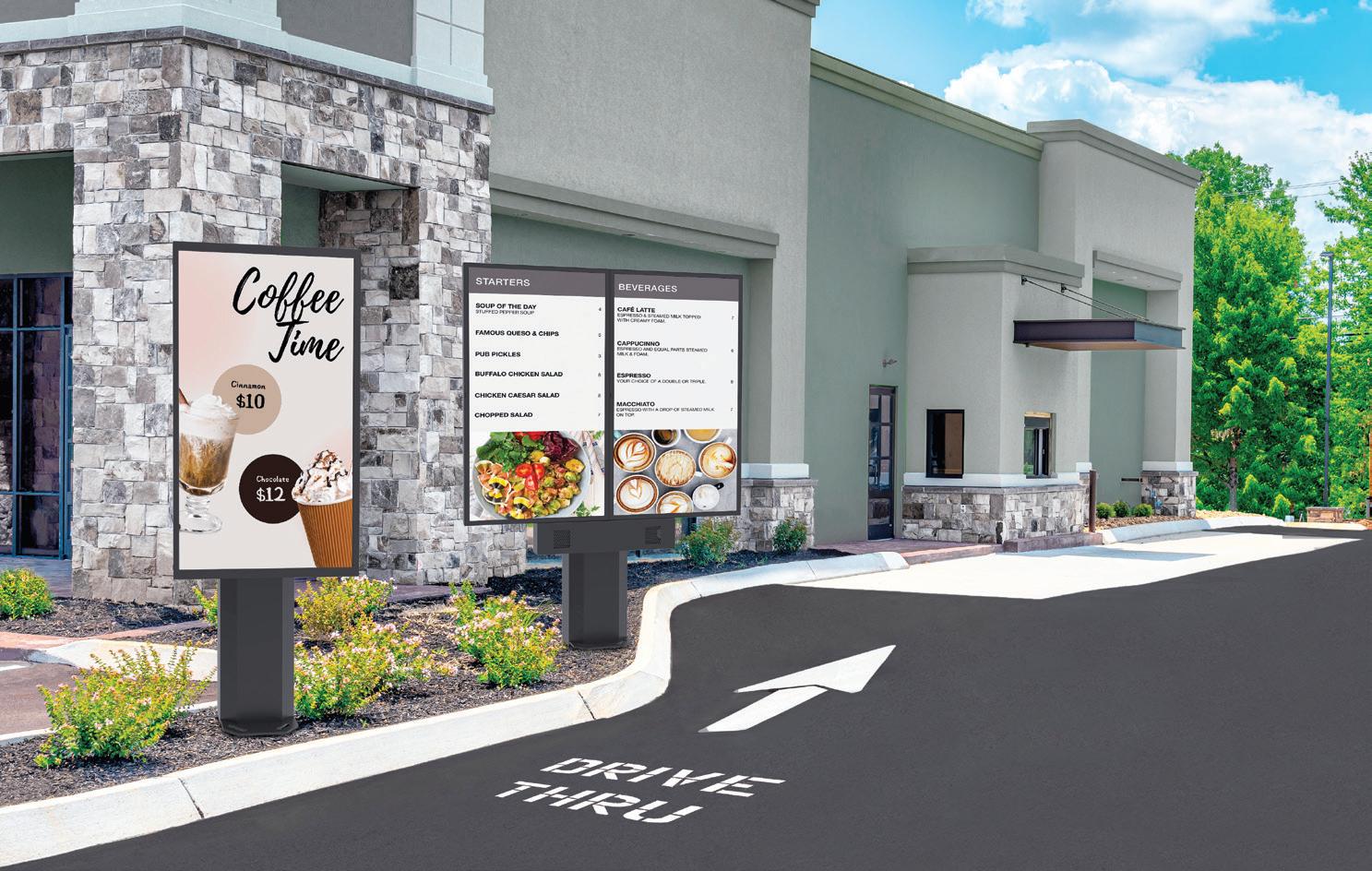
AI is a testament to the industry’s commitment to leveraging technology for operational excellence.
“Ensuring that operators get the most out of their drive-thru requires strategy and focusing on what they want to achieve,” says Sara Sina, president of The Howard Company. Oftentimes, operators have high expectations that don’t come to fruition because they aren’t properly educated on all the aspects that create a successful drive thru.
“Some overlooked challenges include the ongoing costs to run outdoor digital signage, managing the expanding tech stack, and understanding the complexities of networks, software upgrades, warranties, and after-sale support,” Sina says. A strategic focus is essential for overcoming these obstacles, with an emphasis on understanding the variables that contribute to a successful drive-thru operation.
Digital signage is a powerful tool for enhancing upsell opportunities and testing menu offerings, significantly impacting a restaurant’s ROI. “Brightness levels are improving for outdoor screens, making them more readable in direct sunlight,” Sina says.
However, achieving success requires a comprehensive understanding of content, support, and installation processes. “Making sure everything is understood leads to operators’ vision becoming a reality,” Sina says. Partnering with a reliable provider can be invaluable, offering a holistic approach to drive-thru solutions and connecting restaurants with their customers more effectively.
Consistency in product quality and service speed across various locations remains a significant challenge for quickservice restaurant retailers in a highly competitive industry. “Partnering with a trusted brand ensures consistency across the entire brand ecosystem,” Harley says.
“From product offerings to customer experiences, businesses can rely on brand partners to uphold the brand’s image and standards, providing continuity and reliability to customers.”
Partnering with a trusted brand that understands the unique identity and values of the brand they represent is also cru-
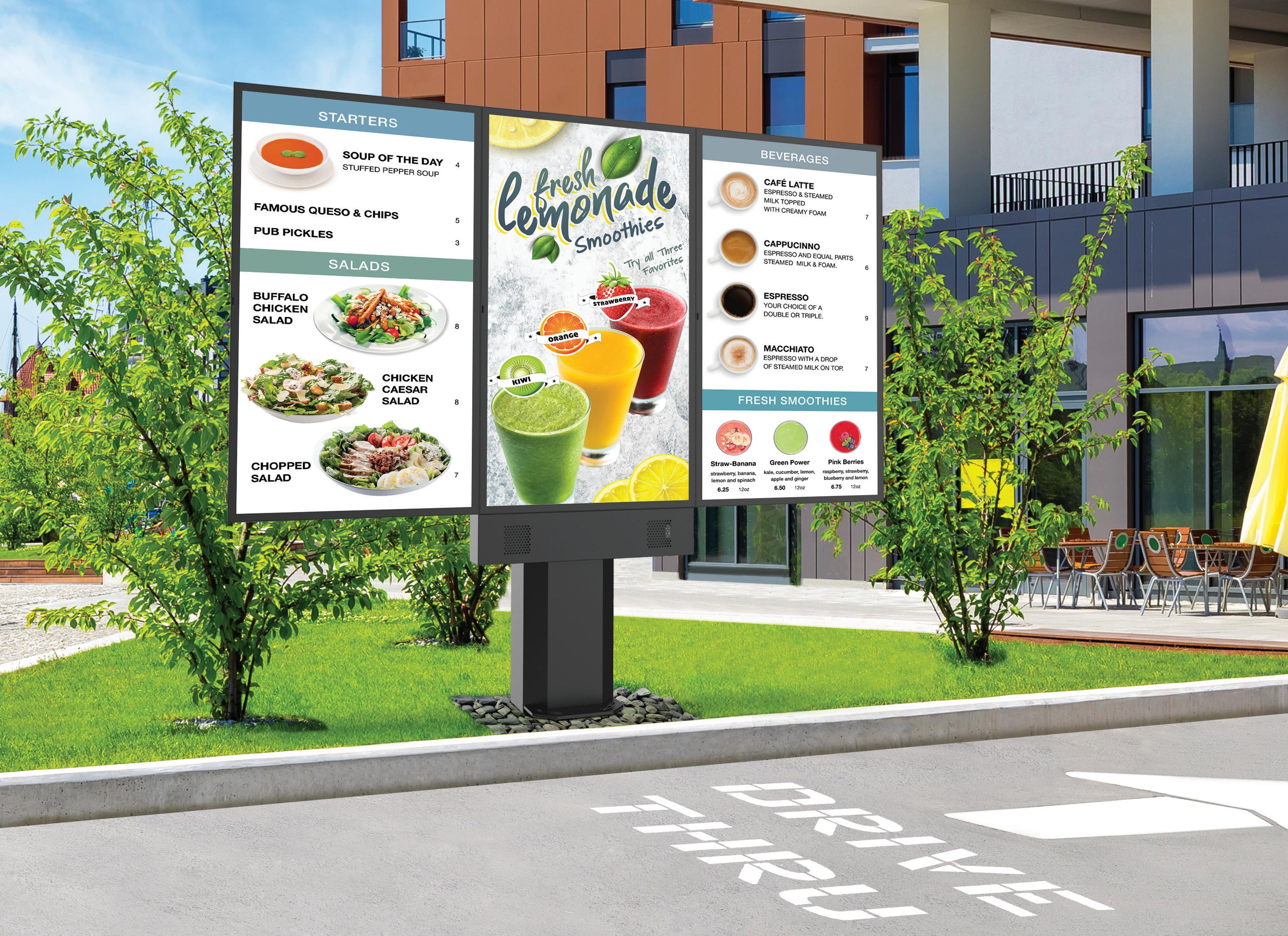





cial. “By collaborating closely with businesses, brand partners can tailor the drive-thru experience to align with the brand’s image, ensuring that every interaction reflects the brand’s identity and resonates with customers,” Harley says.
“Trusted quick-service restaurant brands have widespread brand recognition and awareness, making it easier for affiliated businesses to attract customers and drive brand visibility,” Harley says. “Partnering with a reputable brand can help businesses stand out in a crowded marketplace and capture the attention of potential customers.”
The adoption of new technology and the shift towards mobile ordering introduce new challenges for quick-service restaurant operators. “Meeting customer’s deadlines and accommodating increasing mobile orders amidst rising development costs is one new significant challenge,” Harley says.
Yet, the industry is responding with innovative solutions, such as modular construction techniques, which significantly shorten the lead times for drivethru development. “Buildings constructed using modular methods can be erected in as little as 90 days, expediting the deployment of drive-thru solutions and minimizing construction delays,” Harley says.
The concept of drive-thru-only stores is gaining popularity, appealing to customers who prefer the convenience of placing and picking up their orders without leaving their vehicles. “This streamlined approach eliminates the need for traditional indoor dining areas, optimizing space and resources while catering to onthe-go customers,” Harley says.
The introduction of dual lanes and designated mobile express lanes further enhances the throughput of drive thrus, accommodating higher volumes of traffic and prioritizing mobile orders. Such innovations are crucial for optimizing efficiency and providing customized service to different customer segments.
The industry’s growth and the diversification of options exert pressure on operators to excel in every aspect of their business, from marketing and operations to food preparation and delivery. “Some of
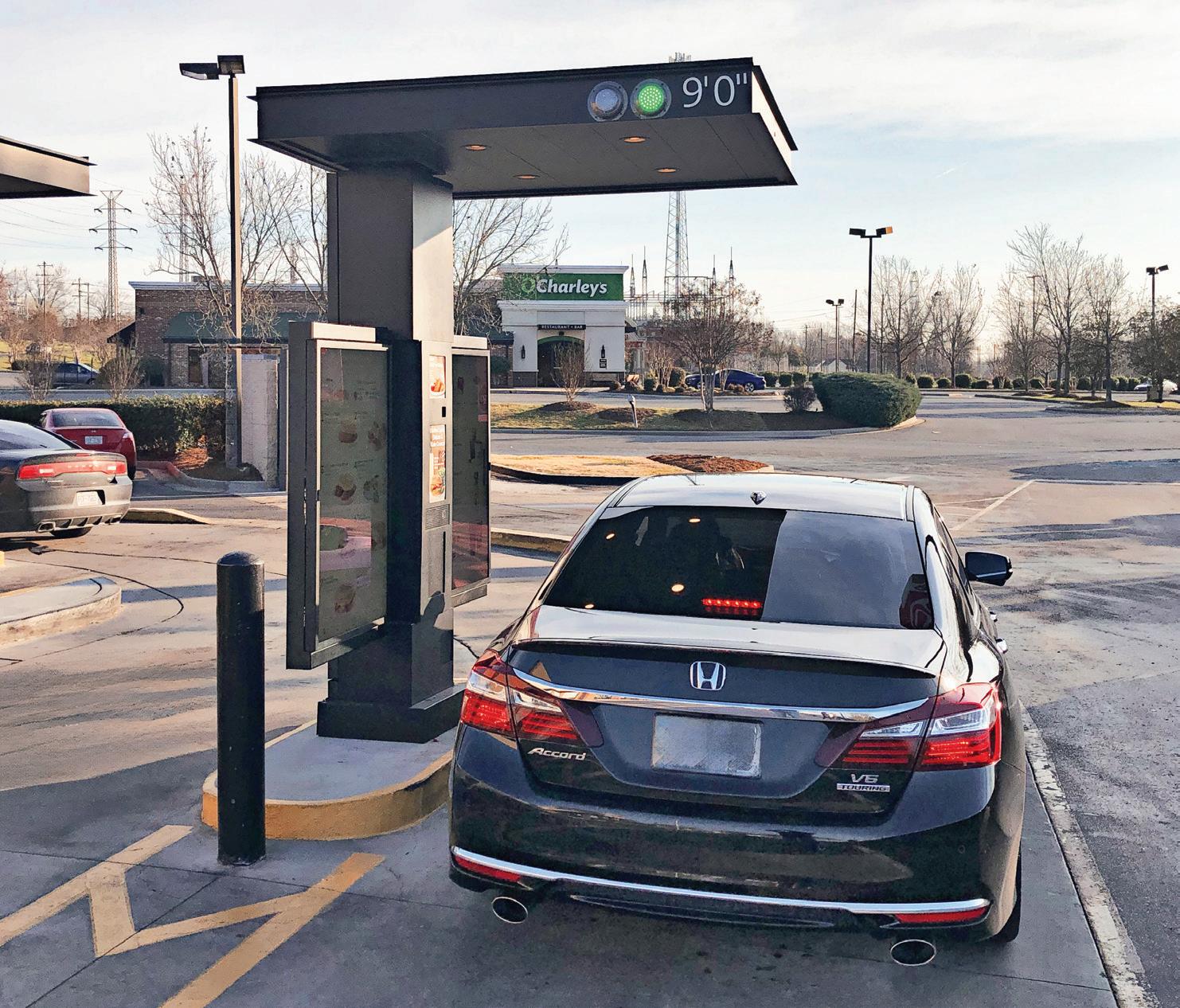
“Partnering with a reputable brand can help businesses stand out in a crowded marketplace and capture the attention of potential customers.”
the latest quick-service restaurant prototypes feature a reduced interior dining area or eliminate them entirely to provide satellite locations with a smaller footprint that focuses solely on take-out service for customers,” says Brian McCloskey, national sales director for Quikserv.
Innovative designs, such as dual Y-lane drive thrus, covered walk-up windows, and designated parking spaces for mobile orders, reflect a shift towards optimizing day-today operations. “These highly sought-after attributes allow for the seamless handling of online, pickup, and third-party delivery orders, with a primary emphasis on speed and convenience,” McCloskey says.
Amidst these operational advance-
ments, there’s a noticeable shift in consumer preferences. “Customers are increasingly seeking healthier, fresher, and more diverse menu options, prompting quick-service restaurant retailers to elevate the quality of their offerings to meet these expectations,” Harley says. This necessitates technological enhancements in communications, speed-of-service timers, and equipment maintenance to maintain operational efficiency and meet customer expectations.
The transformation of drive-thru technology in the quick-service restaurant industry is a clear indication of the sector’s responsiveness to changing consumer preferences and technological advancements. By embracing innovation and focusing on strategic solutions to overcome challenges, operators can ensure that the drive-thru experience continues to evolve, meeting and exceeding customer expectations. The future of the drive-thru lies in the balance of technology, customer experience, and operational efficiency, promising a landscape of endless possibilities and continued growth for the quick-service restaurant industry. SC



The continuous transformation of consumer dining habits is significantly impacting the ope rational dynamics of quick-service restaurants. The changing habits and needs of customers continue to impact restaurant staffing and operations, including drive thru experiences.
“Quick-service restaurant operators face the challenge of catering to three distinct customer segments: the unknown guest/ new customer, the known guest/existing customer, and the concierge service provider,” says Rodrick Glass, executive VP of business development, SME QSR, and C-store Solutions of Creative Realities Inc. Operators turn to strategies for engaging these groups, emphasizing the importance of personalization and the use of technology to create seamless, satisfying experiences for each customer.
“Consumer dining habits are continually shifting, meaning that staffing needs to be optimized based on customer patterns and preferences,” says James Burdette, senior director of the Enterprise Process Innovation Center at Panasonic Connect North America . This evolution is particularly evident in the case of the drive-thru, which is experiencing a notable surge in late-night traffic. Adapting to these shifts requires an agile approach, optimizing staffing based on extended hours and the fluctuating influx of customers.
To navigate these changes effectively, operators are increasingly turning to data analytics. This strategic pivot is rooted in the understanding that, “operators are leveraging data about order times, line traffic, and menu selections to make more informed decisions about the drive-thru,” Burdette says. By harnessing insights from these data points, quick-service res-
Peerless-AV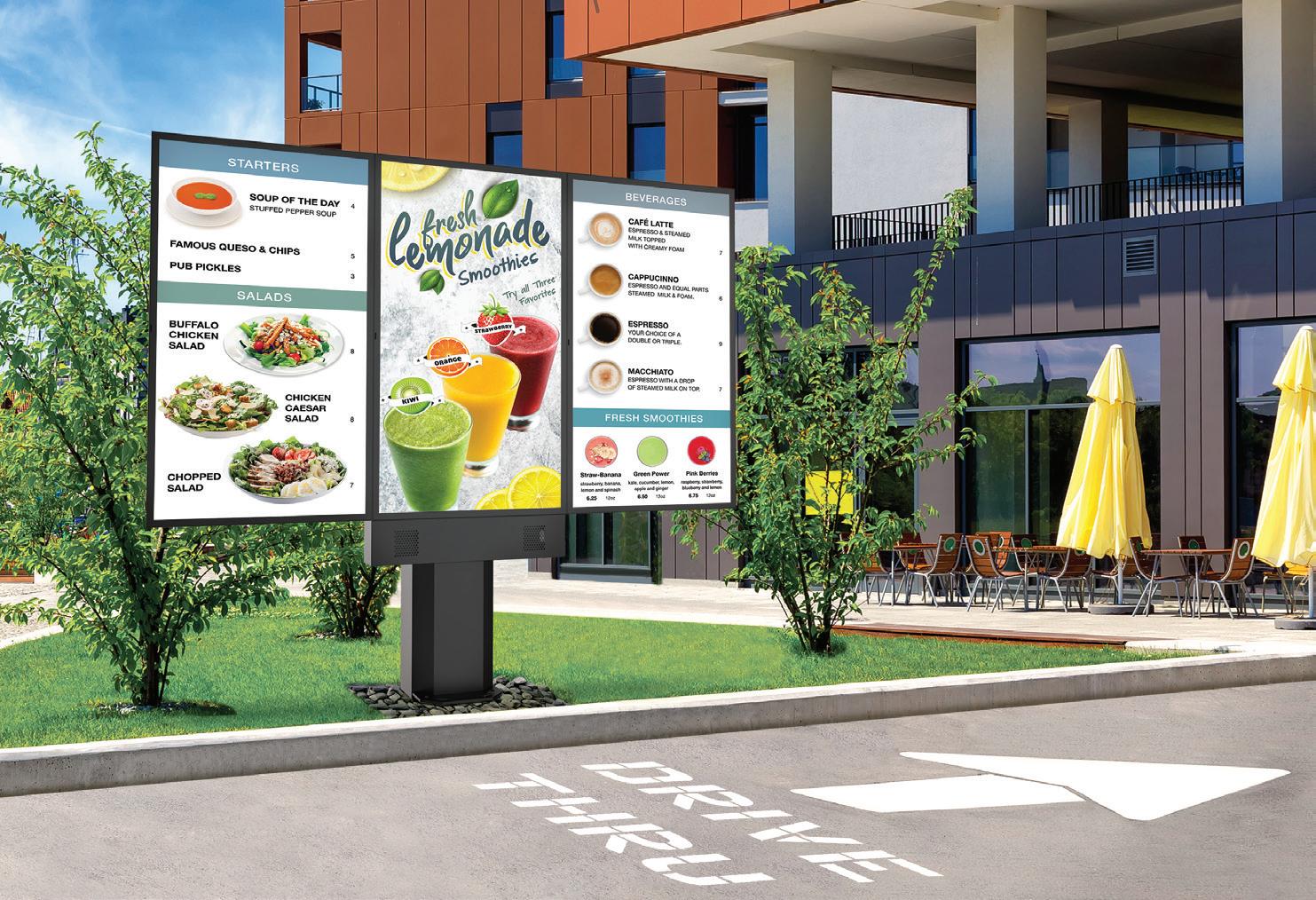
“Integration of data analytics helps operators understand customer preferences, allowing for personalized content and promotions.”
taurants can fine-tune menu offerings, empower staff, and enhance transaction efficiency. Such measures are pivotal in maintaining service speed and accuracy,— elements that are fundamental to the drive-thru experience.
The significance of the drive thru extends beyond mere convenience; it is a critical component of a quick-service restaurant’s overall strategy. “Drive thru experiences are fluid, and are criti-
cally important to the overall strategy of many of the nation’s leading quick-service restaurants,” Burdette says. The ability to adapt to market changes, coupled with a robust technological partnership, is essential.
This relationship ensures the customer experience remains a priority, with technology partners needing to be responsive and anticipatory of market trends. The goal is to keep the brand ahead of the curve, ensuring that adaptations to the drive thru experience are both seamless and customer centric.
However, the push for enhanced throughput and efficiency in high-volume drive thrus places significant pressure on the amount of information team members’ memories can process, also known as cognitive loads. “The desire customers have to increase throughput in drive thrus is pushing all of these systems to become









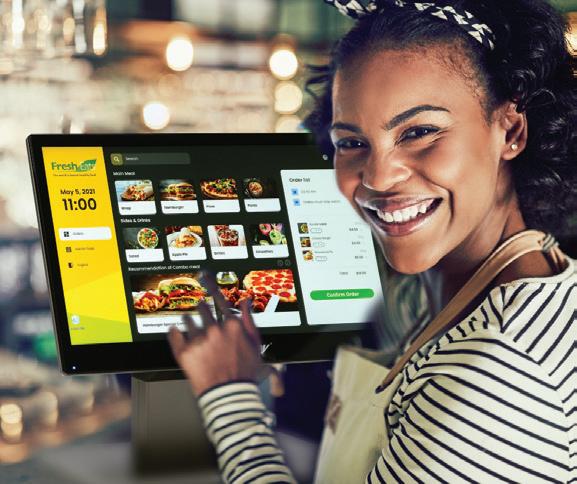



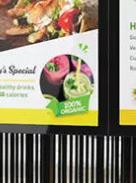
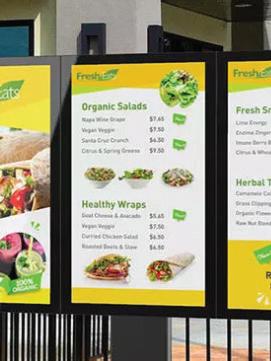



more sophisticated and create more cognitive loads for team members,” says Chrise Siefken, senior vice president of technology at Xenial. Innovations aimed at reducing congnition are on the horizon, promising to simplify operations and improve the manageability of quick-service restaurants.
Customer expectations have evolved. “While customers’ primary expectations of fast service and order accuracy haven’t changed, their expectations around experience and perceived speed of service have,” says Andy Grindstaff, senior manager of strategy and technology at Xenial. The integration of personalized touchpoints and the reduction of friction points throughout the drive-thru process are strategies aimed at enhancing customer loyalty and increasing throughput.
“The need for adaptability to handle varying customer demands and integrate evolving technologies into existing systems poses significant challenges for operators,” says Megan Zeller, senior director of business development for Peerless-AV. This adaptability is crucial in maintaining the relevance and efficiency of the drive thru experience in the face of changing consumer behaviors and technological advancements.
Data analytics plays a transformative role in understanding and catering to customer preferences. “Integration of data analytics helps operators understand cus-
tomer preferences, allowing for personalized content and promotions,” Zeller says. This personalized approach is instrumental in enhancing the customer experience, ensuring that promotions and content resonate more effectively with individual customers.
“A reputable brand is likely to have established itself in the market through years of experience and customer satisfaction.”
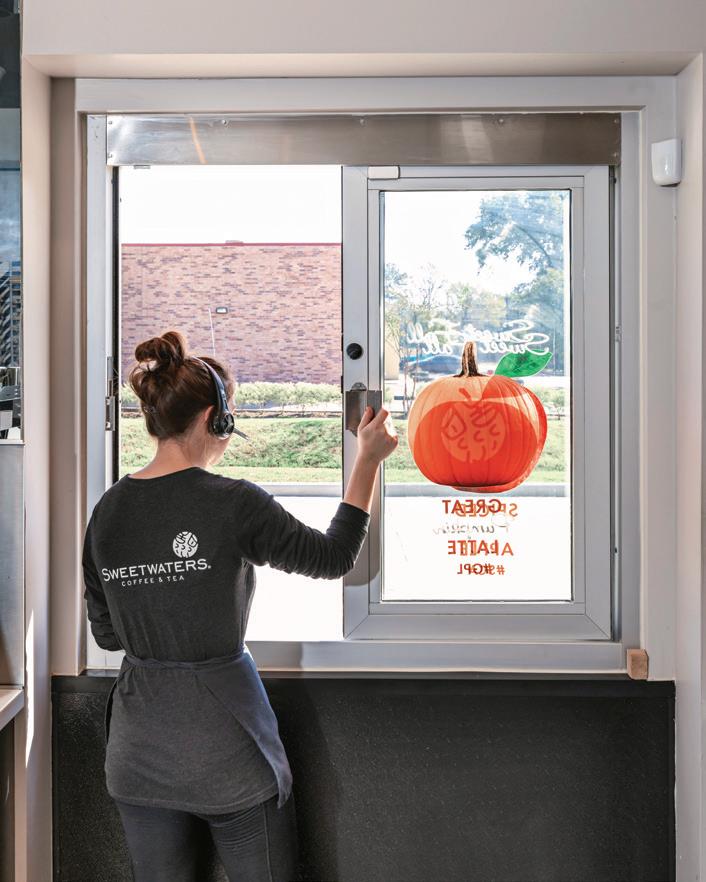
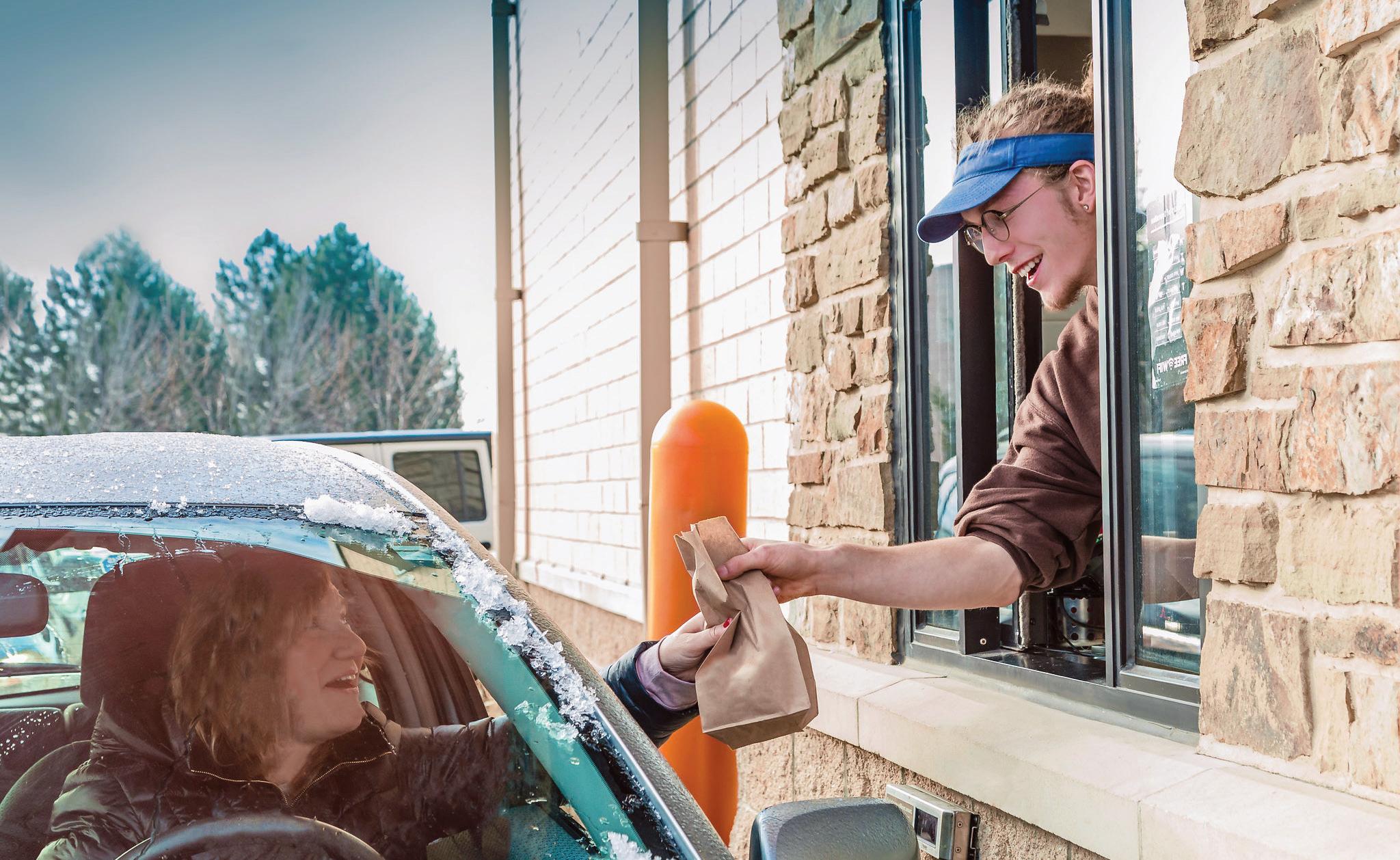
Operational efficiency is further bolstered through targeted programs and strategies. “Training programs for staff to enhance order accuracy and efficiency, along with menu simplification strategies, are being employed to streamline operations and improve the overall customer experience,” Zeller says. These initiatives are pivotal in enhancing the speed and accuracy of service, critical metrics in the drive-thru context.
The integration of mobile apps with digital menu boards represents a significant leap toward personalization and efficiency. “Mobile app integration also allows customers to engage with digital menu boards directly from their devices, providing a more personalized and efficient ordering process,” Zeller says. This technology enables customers to tailor their ordering experience, reducing wait times and improving overall satisfaction.
The selection of technology partners, particularly in the realm of digital signage, is a decision of paramount importance. “It is crucial to work with one partner that offers support, drive-thru education, and strives to turn a customer’s vision into a reality,” says Sara Sina, president at The Howard Company Trusted partners ensure the reliability and security of digital solutions, which are essential factors in the seamless operation of the drive thru.
Partnering with trusted brands enhances customer trust and loyalty. “A reputable brand is likely to have established itself in the market through years of experience and customer satisfaction,” says Brian McCloskey, national sales director at Quikserv. Leveraging the reputation of these brands can significantly impact customer perceptions, encourage repeat business and foster a loyal customer base.
“Quick-service restaurant operators should prioritize regular training for staff to effectively manage and update digital menu boards,” Zeller says. Embracing innovations enhances the customer experience, positioning brands as leaders in the competitive quick-service restaurant industry.
In the digital age, the presentation of menu items through dynamic displays
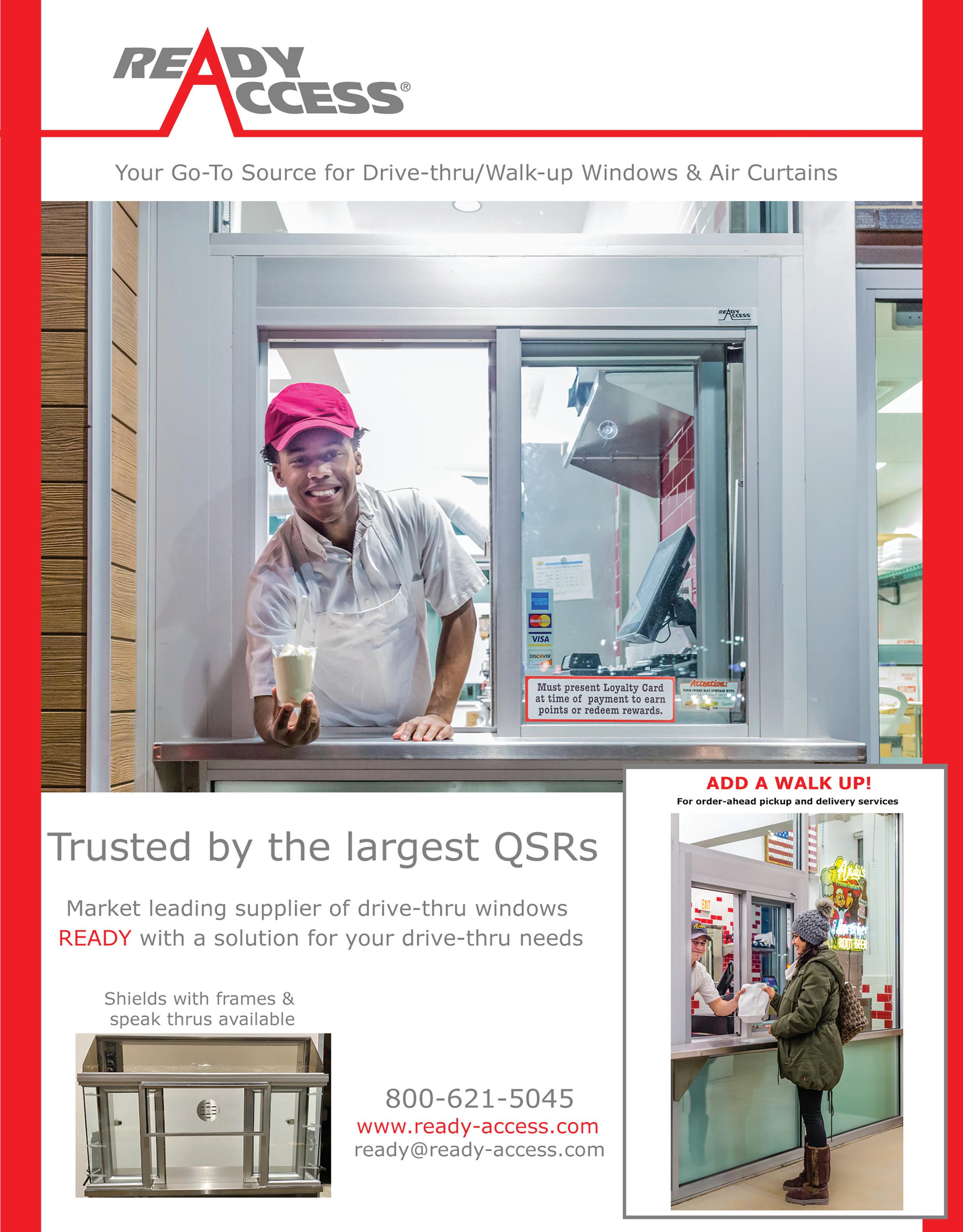

is a strategy that cannot be overlooked. “Customers see drive-thru lanes everywhere they go, which means that staying on top of the newest technologies and focusing on strategy is critical,” Sina says.
“If restaurants invest in digital drivethru solutions,” Sina says. This approach not only captures customer attention but also drives sales of high-margin items, leveraging digital technology to enhance profitability.
The storytelling aspect of a brand is a powerful tool in creating a compelling drive thru experience. “Restaurants should also use their brand’s story to their advantage and share it through indoor video walls, highlighting the details customers want to see,” Sina says. This narrative approach enriches the customer experience, fostering a deeper connection with the brand.
Speed of service remains a cornerstone of the drive thru experience. “Customers expect prompt service without having to endure lengthy wait times,” McCloskey says. This expectation emphasizes the importance of operational efficiency and the integration of technology to streamline the drive thru process.
“The drive thru has emerged as a pivotal component of the post-pandemic quick-service restaurant business model,” McCloskey says. The convenience and speed
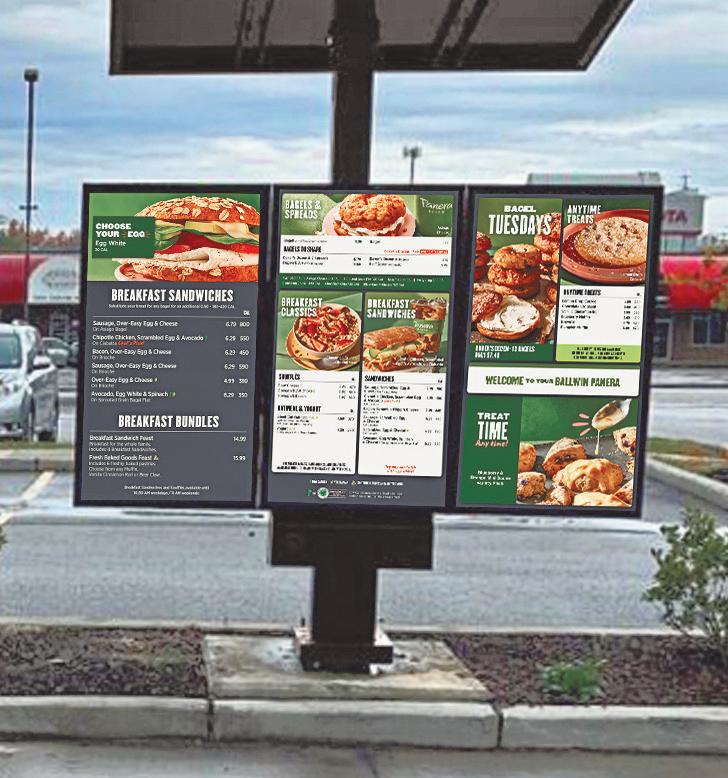
offered by drive thrus have become even more valued, driving the need for continuous innovation and improvement in this area.
Smartphones and mobile apps have also shifted consumers’ wants and needs. “With the widespread adoption of smartphones and mobile apps, customers have come to anticipate they can place food orders quickly and effortlessly, without having to wait in line or interact with a physical menu board,” McCloskey says. This shift necessitates the adoption of mobile ordering, payment options, and digital menu boards, enabling real-time updates and customization.
“More than ever, customers expect orders to be fast and accurate,” says Bob Collins, product development manager at R.F. Technologies, Inc. “They want the ability to place an order before arriving at the restaurant so their order is ready and waiting for them when they arrive.”
“Loyal customers are ones who feel that they are part of the brand.”
“One way to effectively communicate consumers’ needs are being met is to offer personalized experiences,” McCloskey says. “For instance, using customer data gathering methods from online ordering history, loyalty programs, and other relevant analytics tools can help to gather key insights about customer preferences and needs.”
Despite the heavy reliance on technology, the human element remains irreplaceable in the quick-service restaurant industry. “The most successful restaurants have an almost familial relationship with its customers,” Collins says. “Loyal customers are ones who feel that they are part of the brand.”
Trust is foundational to the success of any quick-service restaurant brand. “Building trust is essential for fostering ongoing relationships,” says Corene A. Harley, director of operations for Uni-Structures. Establishing and nurturing trust between quick-service restaurants and their customers is attributed to a brand’s focus on consistent communication, collaboration, and benefits such as customer loyalty programs.
The integration of technology, the emphasis on personalization, and the need for operational efficiency are themes that resonate across the industry. Enhancing the customer experience, leveraging data analytics, and embracing technological innovations must remain the focus. By doing so, quick-service restaurants can not only meet but exceed customer expectations, securing their position in a competitive market. SC
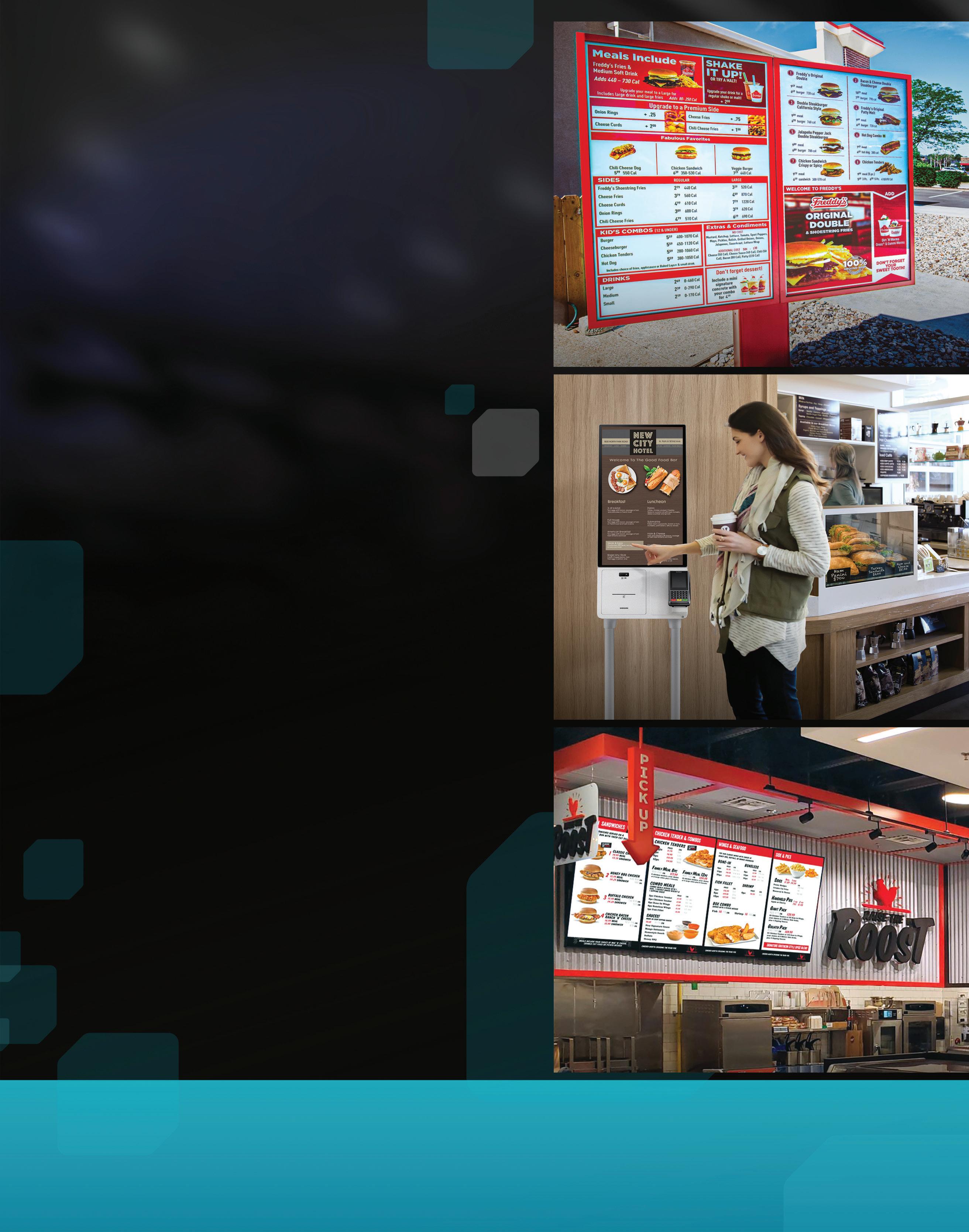

Quick-service restaurants are at the forefront of adopting innovative technologies to enhance customer experience and streamline operations. The need for a digitally transformed drive-thru experience has never been more critical. “Consumers demand a higher standard of engagement and order accuracy to remain satisfied and loyal,” says James Burdette, senior director of the Enterprise Process Innovation Center at Panasonic Connect North America .
This transformation is multifaceted, requiring the deployment of new technology to meet these evolving consumer
The Howard Companyexpectations and deliver an unparalleled drive-thru experience. “This includes deploying new technology solutions like high-definition audio communications technology, POS terminals, mobile linebusting tablets, and digital menu boards to support these goals,” Burdette says.
The significance of order accuracy cannot be overstated in the context of driving repeat business. A considerable portion of the drive-thru experience hinges on visual stimuli such as menu boards and advertising. “However advancements in auxiliary areas such as high-definition audio headsets and mobile handheld tablets are

drastically improving communication between drivers and staff,” Burdette says. “These make up critical parts of the holistic drive thru solutions that quick-service restaurants rely on to optimize operations.”
The drive-thru channel remains a major revenue source, underscoring the importance of choosing the right technology partners. “Drive-thru technologies go through a lot of rigorous use and inclement weather,” Burdette says. This necessitates the selection of durable solutions backed by comprehensive services and support. Which ultimately ensures not only the longevity of the technology in use but also customer satisfaction and retention.
The significance of partnering cannot be overstated. “Trusted brands are those partners that will be there to support business no matter where operators business takes them regardless if it’s
“Operators can also enhance customers’ experiences by implementing an order confirmation system in the drive-thru.”
today, tomorrow, or down the road,” says Bob Collins, product development manager at R.F. Technologies, Inc. Their reliability and support are crucial in navigating the rapidly changing technological landscape, ensuring today’s innovative solutions do not become tomorrow’s obsolete technologies.
“The biggest challenge on drive-thru innovation is around integrations and





solutions that work together,” says Chrise Siefken, senior vice president at Xenial Effective integration requires seamless cooperation among multiple vendors to manage item availability on menu boards, order confirmation feeds, upselling opportunities, and outdoor payment systems.
These integrations are crucial for avoiding poor consumer experiences that stem from disjointed technological solutions. In response, “operators are increasingly trying to find solutions that can offer a wide breadth of solutions for their restaurant that would allow them to reduce the amount of overhead needed to manage solutions and drive speed to market for their initiatives,” says Andy Grindstaff, senior manager of strategy and technology at Xenial.
“With the proliferation of more dynamic digital menu board content, integrated loyalty programs, and improved payment technology, consumers have become more engaged earlier and more often in the drive-thru,” Grindstaff says. Yet, operators must navigate the delicate balance between maintaining speed and efficiency and ensuring order accuracy to prevent customer dissatisfaction.
Speed and efficiency remain paramount in the drive-thru sector, with operators constantly searching for ways to enhance service delivery without compromising quality. “This pursuit is further complicated by the ever-changing landscape of technology,” says Corene A. Harley, director of operations at Uni-Structures. “Staying abreast of technological advancements is essential for meeting customer demands and staying competitive,” Harley says.
As the landscape of digital drive-thru technologies continues to expand, so too does the development of digital solutions. “There are twice as many add-ons as there used to be for digital drive-thru solutions,” says Sara Sina, president at The Howard Company. Some of these add ons include POS systems, order confirmation systems (OCS), AI, and camera systems.
The evolution towards digital is further evidenced by the popularity of menu boards. “Our most popular drive-thru menu board allows customers to move

R.F.
“Drive-thru and pick-up windows enable quickservice restaurant operators to cater to their customers conveniently, safely, and efficiently, offering a range of customizable options.”
more gradually into digital by starting with static boards or a hybrid with both static and digital can easily field upgrade to 100 percent digital,” Sina says.
“Choosing a vendor with previous static menu experience can also provide a valuable alternative to going fully digital,” says James Cullinan, CEO and president of National Sign Systems. Using a hybrid system can save restaurant operators money, while strengthening customers’ experiences.
Technological advancements are reshaping the drive-thru landscape.
“Introducing innovative features and functionalities enhances convenience, efficiency, and overall customer experience,” Harley says. AI-powered menu optimization, predictive analytics, automated pay-
ment solutions, and voice recognition are a few examples of how technology is enhancing convenience, efficiency, and satisfaction.
The drive-thru experience is also influenced by broader industry challenges such as rising building costs and labor shortages, which leads operators to make some changes. “Sometimes less is more when it comes to drive-thru windows,” says Anna Ellis, sales and marketing manager at Ready Access. Some chains are moving away from automatic windows with motors and adopting manual systems with magnets and presence sensors for lower upfront costs and increased durability.
Automation and online ordering are pivotal in enhancing drive-thru efficiencies. “With the increasing complexity of food delivery involving delivery services and drive-thru customers, brands are investing in AI to ensure streamlined operations, prioritize orders and optimize efficiency in the kitchen,” says Brian McCloskey, national sales director for Quikserv. Moreover, the effectiveness of online ordering in reducing errors highlights the importance of digital channels in modern quick-service restaurant operations.
“More sophisticated operating systems are becoming more rapidly embedded in screens to run more complex content and other remote device management controls as well,” says Rodrick Glass, executive VP of business development, SME QSR, and C-store Solutions of Creative Realities Inc. These systems allow quick-service operators to stay competitive while satisfying their customers.
The drive-thru experience is at a pivotal juncture, shaped by the integration of advanced technologies and strategic partnerships. As quick-service restaurants navigate the complexities of an evolving industry, the adoption of innovative solutions will be instrumental in enhancing operational efficiency, accuracy, and customer satisfaction. Success hinges on collaboration with partners, who provide support and innovation to meet the demands of consumers and pave the way for better drive-thru experiences. SC










13100 Magisterial Drive, Suite 100 Louisville, KY 40223
404-528-918
cri.com
Creative Realities, Inc. (CRI) is a full-service, end-to-end digital signage solutions company with a suite of proprietary content management systems (CMS). We apply data-driven design methods to create digital menu boards optimized to drive transaction size, volume, through-put and ultimately return on investment (ROI) – at scale.

2848 Whiptail Loop Carlsbad, CA 92010 858-535-6000
hme.com/qsr
HME was the first to introduce the wireless drive-thru headset system to the restaurant industry over 40 years ago. Today, restaurants in over 140 countries fulfill more than 30 million orders daily using HME systems. HME offers industry-leading solutions for drive-thru and restaurant communications backed by full services and support.
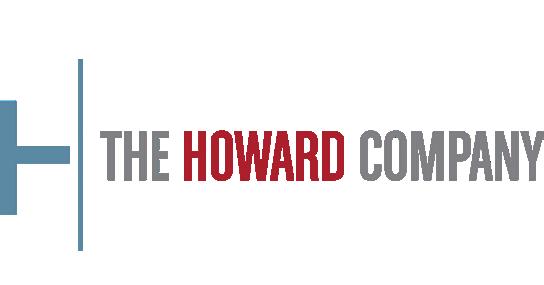
1375 N Barker Rd Brookfield, WI 53045
262-782-6000
howardcompany.com
In business since 1950 and employee owned, The Howard Company is the nation’s leading branding signage and technology provider. Our team provides first-class customer service through consultations, a broad product line, and customization to fulfill clients’ needs. We specialize in drive-thru and indoor systems, OCS, POS, digital services, and more!

4200 Lyman Court Hilliard, OH 43026
614-850-2540
nationalsignsystems.com
National Sign Systems located at 4200 Lyman Ct. Hilliard OH 43026 is a nationally recognized manufacturer of restaurant Drive Thru Menu Systems, Image Products, and Retail and Architectural Signage. Call us at 800-544-6726 or reach us online at www.nationalsignsystems.com
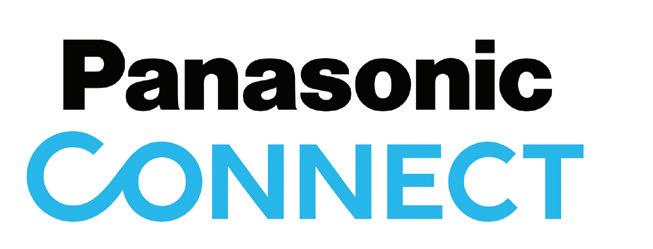
9th Floor Two Riverfront Plaza Newark, NJ 07102 201-392-4181
na.panasonic.com/us/food-service-systems/ restaurant-and-hospitality-tech-solutions
Panasonic Connect is a B2B company offering device hardware and professional services for the connected enterprise. Our diverse portfolio includes self-ordering kiosk, POS hardware, digital signage, and drive thru communications. By working with our customers and ecosystem of partners, we provide the right technologies to address our customers’ needs.

2300 White Oak Cir. Aurora, IL 60502 630-375-5100
peerless-av.com
For over 80 years, passion and innovation continue to drive Peerless-AV forward. We proudly design and manufacture the highestquality products ideal for restaurant applications, including outdoor displays and digital menu boards, dvLED and LCD video wall systems, complete integrated kiosks, and more. Peerless-AV develops meaningful relationships and delivers world-class service.

11441 Brittmoore Park Dr. Houston, TX 77041
800-388-8307
quikserv.com
Quikserv is a leading manufacturer of drivethru windows and secure transaction systems. We are the trusted supplier for all the top quick serve restaurant brands and are renowned for our wide selection of in-stock windows, custom capabilities and excellent customer service.
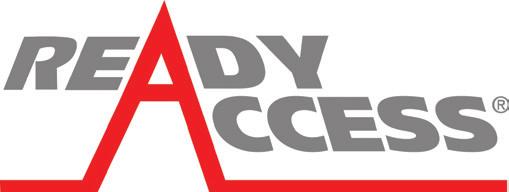
1815 Arthur Drive West Chicago, IL 60185
800-621-5045
ready-access.com
Ready Access is your go-to source for drivethru/walk-up service windows and air curtains. Designed with the largest restaurant chains for a perfect balance of durability, value, and function! Trusted market leader for over 50 years. Let our experts help find the best configuration for your restaurant.
330 Lexington Drive Buffalo Grove, IL 60089
800-598-2370
rfdrivethru.com
R.F. Technologies, Inc. is your one-stop solution for cutting-edge technology. With 35+ years of industry leadership, we provide proven, innovative solutions for all restaurants. We specialize in drive-thru systems, timers, digital menu boards, POS, kiosks, and surveillance solutions. Benefit from nationwide on-site service for seamless integration and optimal performance.

8540 Cobb Center Dr. Kennesaw, GA 30152 770-499-2000
unistructures.com
Uni-Structures, Inc. designs, manufactures, and installs drive-thru elements, providing customized solutions to optimize operational efficiency and elevate overall customer satisfaction.
3420 Toringdon Way, Suite 400 Charlotte, NC 28277 800-253-8664
xenial.com
XenialTM, a Global Payments Company, is a leading technology solutions platform for enterprise QSR and Fast Casual industries. With over 35 years of experience, Xenial has a direct presence in 62 countries, serving 51,000 locations and another 110,000 cloud merchants.
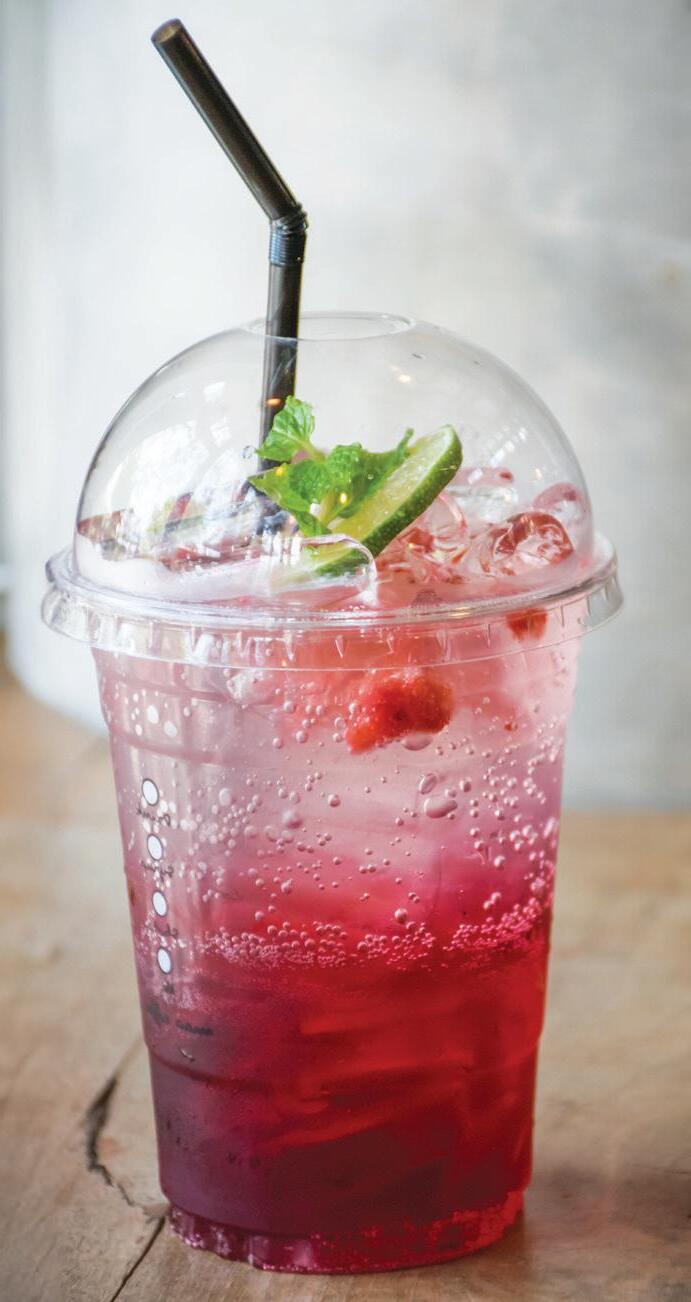
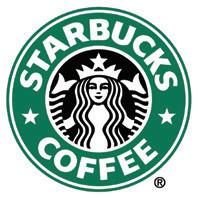








In 2022, the U.S. Census Bureau reported that 30 percent of franchise businesses were owned by minorities, compared to 18.8 percent of non-franchised ones. Minority and female ownership across the quick-service sector has continued to climb due to targeted industry discussions and spotlight events. But there is still work to do when it comes to elevating, educating, and empowering women who are looking to break into franchising.
Robin Gagnon, cofounder and CEO of leading restaurant brokerage firm We Sell Restaurants, has dedicated her life to the world of franchising. She is a certified franchise executive with the International Franchise Association, serving on its board of directors and chairing its Women’s Franchise Committee.
“[ Women in franchising ] are so near and dear to my heart,” Gagnon expresses. “I have spent the last eight years on the Women’s Franchise Committee, and I feel as if women still need to know it’s OK to raise their hand and ask for help. Help is an immensely powerful, four-letter word.”
She recognizes there are a multitude of challenges confronting women in franchising, including finding access to capital, putting
lending deals and financial packages together, and understanding different revenue requirements and sources.
The largest hurdle women must climb is the lack of education about available programs.
Brands including Wendy’s, Pizza Hut, Taco Bell, and Wetzel’s Pretzels have created initiatives to accelerate minorities in franchising, but more awareness is still needed.
“Brands are recognizing that women make incredible contributions, but as a society, and particularly as women already in leadership, we have to be willing to help one another,” Gagnon says. “Women are natural mentors because we’re nurturing, right? So, there must be this continual sharing of community within the franchise world to make sure women know they are treasured, and they can go for it.”
Pizza Factory president and CEO MJ Riva was a franchisee of the brand for 30 years prior to acquiring it. She has a lifetime of experience in the food industry, starting at a donut shop when she was 16.
She’s an advocate for the franchise model and understands the industry’s efforts to communicate and educate prospective franchisees about what it can offer.
However, Riva believes the segment falls short of having a wide enough reach to all audiences.
“There are demographics we still need to reach and get them to understand what franchising really is and break those misconceptions about it,” Riva says.
“There’s always going to be a challenge ... but there are more women-focused mentoring groups than ever right now, giving women the support they need.”
Riva stresses the importance of gathering groups of women and hosting open discussions around the topic of franchising, whether through mentorship meetups, conferences, or workshops. She says having a listening ear is crucial to receiving guidance against any obstacle.
Riva also acknowledges that some brands have showcased female-led contributions and the incredible power of women helping others climb the ladder.
“It’s not that the field is starting to level ... It’s more so the idea of women becoming more empowered, and they’re WE SELL
RESTAURANTS, SCOOTER’S COFFEE, PIZZA FACTORY JOELLE LEDER PHOTOGRAPHY STUDIO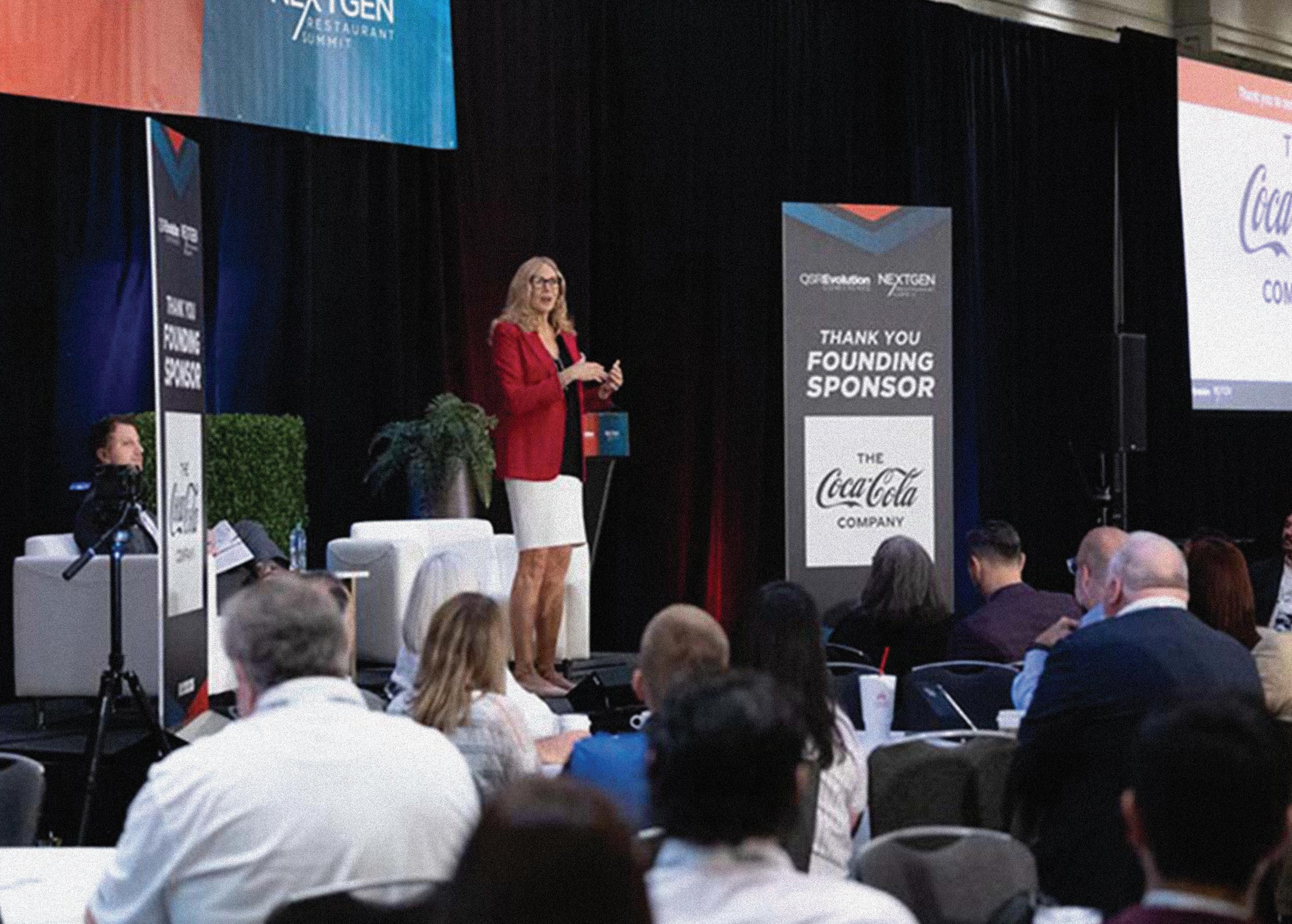
Join us for two days of informative sessions, expert speakers, and networking opportunities. Discover the latest industry trends, gain insights into customer behavior, and learn about cutting-edge technology that can help take your business to the next level.
Don't miss out on this exciting opportunity to connect with fellow industry professionals and gain a competitive edge in the ever-changing world of full-service restaurants. Register now and secure your spot at the QSR Evolution Conference— the must-attend event of the year!


















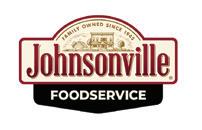


















starting to realize there’s a lot of things we can do with the support of other women and make a big difference,” Riva says.
“We’re seeing more and more women CEOs in the United States right now.”
Like Gagnon, Riva’s advice is to have the courage to reach out for help when needed, and she advises women to stay true to themselves and their vision.
While conferences can be expensive, she emphasizes how imperative they are for finding people who are open and willing to lend a hand and answer questions.
“Don’t ever change your path ... know the difference you’re trying to make, and stick to it,” Riva says. “If you’ve chosen [to enter franchising] and be a leader, you’ve done it for a reason, so lead with that in mind.”
Kim Ellis, chief development officer of Scooter’s Coffee, believes it’s easy to get stuck in the mindset of viewing being a woman in franchising as a barrier instead of something to leverage and be proud of.
“I always think it’s an interesting topic when it comes to being a woman or a minority [ in franchising ] as I am both, and I don’t see it as an obstacle,” Ellis says. “Sometimes I don’t think we should have a mindset that there are barriers ... Our mindset might be the barrier itself.”
Her biggest advice for women overcoming mental or physical
hurdles to franchising? Similar to Gagnon and Riva, she’s an advocate for the power of finding the right mentors. Ellis has had the same teacher for 35 years—a savvy businesswoman she met during her tenure at Blockbuster.
“My secret to success is surrounding myself with a mixture of mentors to help support my weaknesses and development,” Ellis says.
“For me, finding a powerful woman with a voice in the room inspired me [to do the same].”
Ellis compares success in the franchising world, especially for women, to a three-legged stool—the key is to secure mentorships, network at industry events, and overcome a limiting mindset that could potentially hold women back.
“Franchising, networking, and mentoring go hand-in-hand to allow people to gain valuable insights in this industry,” Ellis says. “This way, when people make decisions on the route they want to go, they know it’s an informed and educated one.”
Scooter’s has worked to have a healthy mixture of diverse franchisees, including women, men, and married couples. Ellis advises those who see their gender as a hardship to look beyond the surface level and, as Gagnon says, “go for it.”


















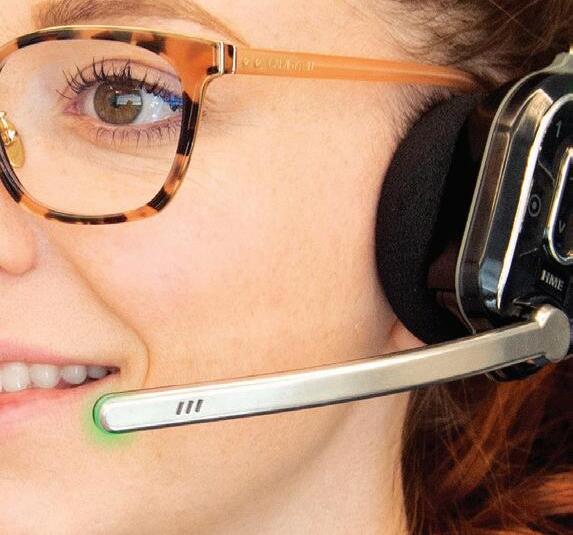










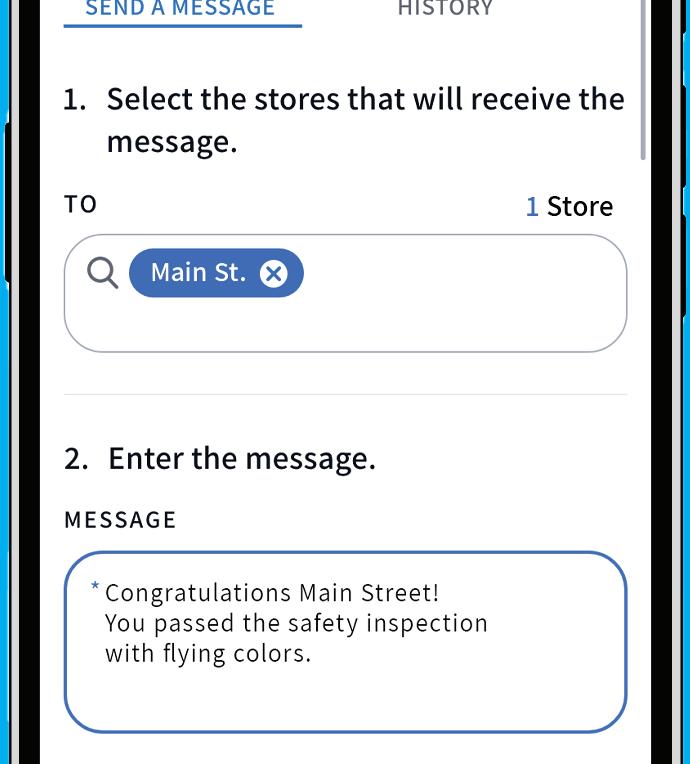














With more workers returning to the office, the channel is regaining its status as a key revenue stream.
BY SAM DANLEYJust Poké has been waiting to flex its catering muscle. The Seattle-based fast casual was plotting an aggressive outbound push to drive growth in the channel four years ago after it opened a new commissary kitchen capable of handling large orders. Then in-person gatherings came to a grinding halt and moved those plans to the back burner.
Cofounder Norman Wu says the poké chain started seeing an increase in inbound orders early last year, prompting it to revisit those plans for an outbound program.
“We were getting a lot of orders from tech companies in Seattle as part of the drive to get people back into the office, and we were hearing that they were going to continue mandating more days in the office over the next 18 to 24 months, so it just made sense to really go after that business,” he says. “I think there’s demand on the employee side to have more unique offerings instead of just sandwiches and pizza. That’s definitely been helping us.”
With more people returning to in-person work and private events swinging into full gear, catering is fast becoming a priority for a growing number of brands. CAVA, Sweetgreen, Noodles & Company, and El Pollo Loco are just a few of the public companies devoting more airtime to the channel in earnings calls. Over half of operators surveyed by TouchBistro last year planned to introduce the service in 2024.
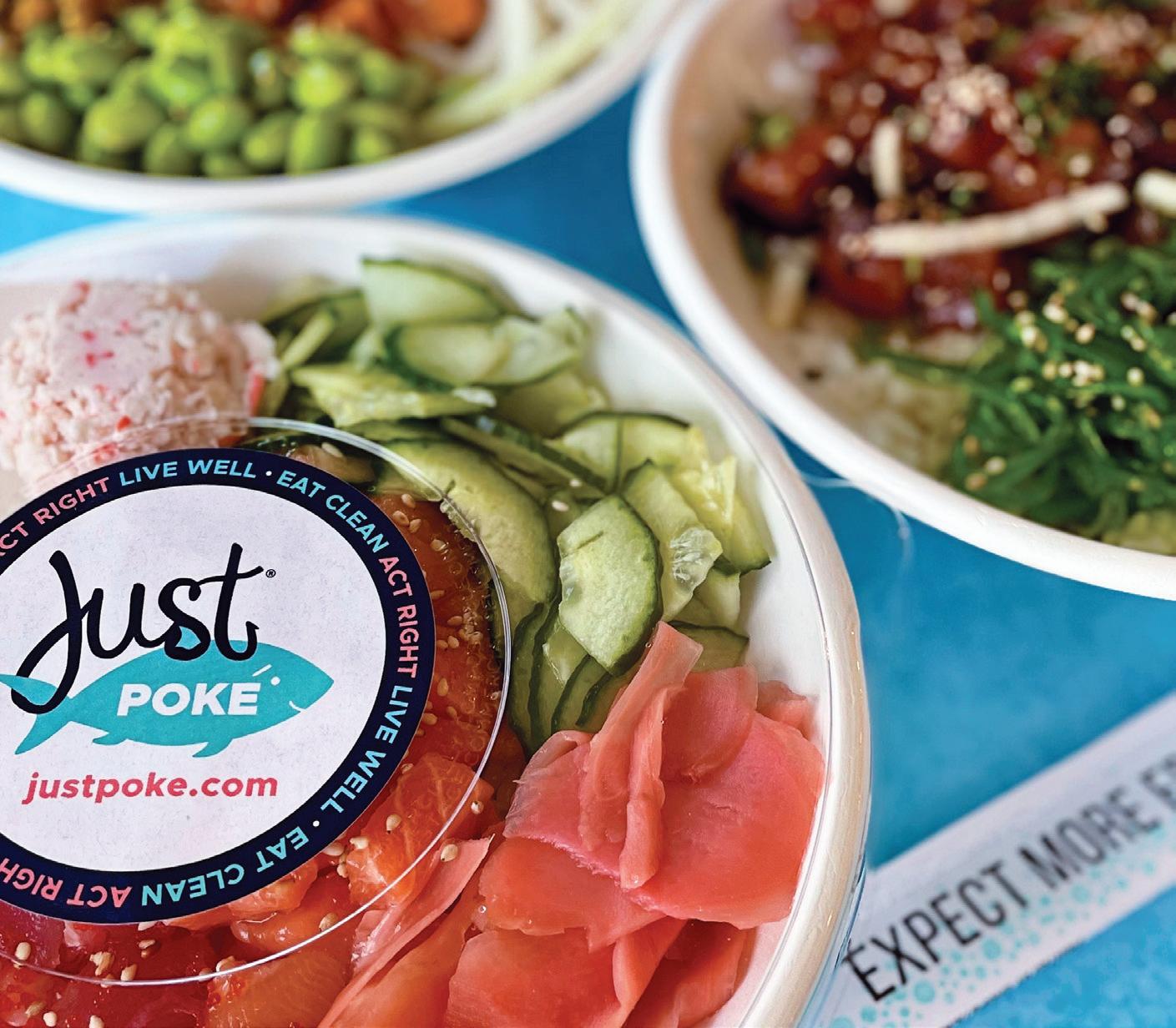
It also is less reactive to inflationary pressures.
Restaurants aren’t just looking to meet the organic increase in order volume. Many are setting their sights on actively growing in the channel and making it a bigger portion of their overall business.
Fajita Pete’s knows a thing or two about the advantages that come with a robust quick-service catering program. It’s been a focal point since the Tex-Mex chain launched over 15 years ago, consistently making up a third of its total sales with average tickets hovering around the $500 mark.
Founder Pedro “Pete” Mora says there are several factors that make catering an attractive growth channel, beyond the obvious uptick in demand.
“It’s easier to stock up, easier to staff up, easier to order for, and easier to prepare for,” he says. “You can do higher tickets and higher sales with less people, so it’s just a higher-margin part of the business.”
“The corporate card is always more flexible than the personal card,” Mora says. “With all the inflation going on in the market, people are still ordering for the office, while the retail customer is trading down or ordering less frequently as they adjust their budget at home.”
Fajita Pete’s catering revenues are back at pre-pandemic levels after surging nearly 30 percent year-over-year in 2023. Now, it wants to further sharpen its focus by channeling more dollars on generating growth and investing in tech upgrades to improve the online customer journey.
The company earlier this year teamed up with smart website platform Clutch Creator to introduce AI into its catering program. Previously, customers answered upwards of 80 questions on an online form when submitting an order. Now, they respond to a single prompt asking about their event and sit back as AI does the rest. The site generates their entire order, using data from previous transactions to predict preferences and provide personalized recommendations. The entire process can be
great way to showcase your brand.” Costa chose to open in the Seattle airport, she adds, because it’s often a layover location for travelers going to and from China, and Costa has a strong presence in the country.
Part of this is thanks to Costa’s purchase in 2017 of Chinese coffee chain Yueda. Following this, Costa’s then-CEO Alison Brittain said the company was looking to leave Whitbread in order to expand, with China being a focus of that growth.
But back to the U.S., while Costa’s opening retail stores, its focus is really B2B, where “people have a real opportunity to engage with the brand,” Brown says
And while Costa is busy getting its name known to the American public and delving into what consumers here want to drink, it’s opening Smart Cafes at a rapid clip and now has 250 open in the U.S. (more than 16,000 globally). These give Costa a 24/7 opportunity to serve customers and due to their small footprint can fit in many locations. “We have the flexibility to go in anywhere,” Brown points out.
The Smart Cafe is an automated touch screen machine that produces drinks in around a minute and a half. From a threefoot by three-foot footprint, it can create more than 200 “barista quality” drink combinations, says Costa, including a cortado, a cappuccino, and a flat white.
Coca-Cola already has extensive experience in vending machines through its Freestyle fountain machines, which launched in 2009 and can offer an array of beverages.
Both the Freestyle and the Smart Cafe are internet-connected machines that can report back to Coca-Cola. This refines and optimizes offerings to understand consumer behavior and choice, helping Costa satisfy consumer desire and innovate. Costa doesn’t want to be just a coffee shop or just a vending machine option. The company also plans to provide beans and equipment to other channels.
And this year it plans to launch Podio, a coffee pod system for B2B channels. This machine can be self-serve or provided by an establishment, comes in three sizes, and offers a variety of coffees ranging from lattes to macchiatos. The Podio machines can deliver a coffee in just 12 seconds. Amanda Baltazar is a regular contributor to QSR and is based in Washington.
FRANCHISE
surrounding community, professional sports, and active lifestyles. It also provides Smoothie King with a big stage to put smoothies into the hands of fans, which creates a halo effect around the concept.
“When you look at partnerships now between brands and sports, the years of spending big money to put a logo on things has gone away,” Radley adds. “We’re looking at teams that already have an appreciation for us and can have an authentic integration [with Smoothie King].”
To place a value on sports partnerships, Radley looks at a few factors, saying it’s not a one-size-fits-all approach: it can bring in a younger audience, give a larger presence to a market where sales are slipping, and put products in stadiums wanting healthy items for their guests. While these collaborations do an efficient job of attracting consumers into brick-and-mortar locations through an elevated level of exposure, Radley says brands must be ready to build an activation component to bring the partnership to life.
Mountain Mike’s Pizza, a leading California-based family-style pizza chain, utilizes marketing activation techniques with its sports partnerships to build customer loyalty, increase foot traffic in stores, and expand brand visibility and awareness.
The pizza concept has been the Official Pizza of the San Francisco 49ers since 2018 and has recently secured additional partnerships with the Los Angeles Angels and Sacramento Kings. Through app trigger campaigns, CMO Carol DeNembo has seen a 13 percent increase in loyalty transactions and a 51 percent and 26 percent increase in transacting members from the 49ers and Kings promotions, respectively.
“These triggers get our guests to come into the restaurant to participate in the game day activities,” DeNembo says. “For [ Mountain Mike’s], they have to download our app to get the offers, so not only are we increasing guest acquisition on our apps, but we’re also bringing business into our stores.”
DeNembo says the value of sports partnerships validates the brand in being “the place to be” for game day celebrations, builds a digital and social presence inside of stadiums, which drives guests inside the stores and to the app, and increases community engagement opportunities.
Satyne Doner is a staff writer for QSR. She can be reached at sdoner@ wthwmedia.com
completed in less than half the time it takes to add items to baskets on an individual basis.
“We’re constantly analyzing where the friction is in our ordering process,” Mora says. “We decided to make it easier by using AI as a kind of catering concierge, where you type in the kind of event you’re having, and it pre-fills your cart with recommended items. The whole idea is to get people what they want and need faster.”
Tech vendors like Toast, Lunchbox, and Olo have amped up their catering solutions lately with features designed to streamline the customer experience and reduce operational overhead. They’re also aiming to make it easier to get started for brands venturing into catering for the first time. That can be a daunting task, says Nathan Torres, senior product manager for Olo’s catering solution. High ticket values come with equally high stakes, after all.
“For starters, menus are extremely important, both in terms of what you’re offering and how you organize it,” Torres says. “Guests who are ordering catering for the first time may not necessarily know where to begin. They don’t know if they want a buffet, box lunches, or something else. You should not only have your suggested headcounts for each of your items, but also what you recommend it for. Is it for on-the-go? Is it for something that’s more social?”
To that end, Wu says feedback from early adopters set Just Poké on the path of having distinct options for different sizes of groups and different types of events. That includes multiple build-your-own poké bar packages as well as individual meal options featuring the same signature bowls available in its stores.
Torres also recommends restaurants focus on developing separate workflows specifically for catering. Otherwise, they’ll invite chaos into the kitchen and risk sacrificing their day-to-day business.
Just Poké took the time to develop separate SOPs for catering. Wu says that made it feasible to not only accept inbound orders but start revisiting the outbound program. Now, he sees the channel accounting for up to 10 percent of the company’s top-line revenue this year.
Sam Danley is the associate editor of QSR. He can be reached at sdanley@wthwmedia.com


















What was your first job?
My first job was mowing lawns in my neighborhood.
What’s your favorite menu item at Protein Bar and Kitchen? My favorite entrée at Protein Bar & Kitchen has to be the best-selling Mexicali bowl. Favorite protein shake is our PB&J with some modifications, I substitute the almond milk for oat milk and remove the agave.
What’s your favorite cuisine aside from Protein Bar and Kitchen?
Aside from Protein Bar & Kitchen my favorite cuisine is anything my wife Stephanie cooks. She is a great cook.
Who inspires you as a leader? The people who I work with inspire me to be a leader. We are so fortunate to have a great team in our restaurants and the store support center.
What’s the best piece of advice that other restaurant executives should hear? The best piece of advice is, it’s all about the people. Make sure everyone on your team understands that you see them, hear them, and value them.
What are some of your interests outside of work?
I love to fish, particularly with my family. It’s chance to totally disconnect. I also love dining out, finding that hidden gem whether it a full-service restaurant or a small stand.

Protein Bar & Kitchen is a special health food brand that has super fans of nutrition begging for more. This flavor wasn’t originally innate but developed by our leadership team in 2017 when we broke status quo and embarked on a culinary adventure that would forever change the way people think about eating well.
In 2017 when I began serving as president and CEO with a new leadership team at the helm we took the reins, ushered in a taste revolution for every-BODY. Together we prioritized healthy foods that are good for you, but also taste great for the most important people in our business, our customers.
As we have navigated through the evolving restaurant space, at the forefront of has been prioritizing our customers. Whether that is in our menu offerings or through day-to-day interactions, our super fans are the ones that inspire us to continue onward in our mission for being a premier location for healthy, convenient, and delicious food.
Prior to joining the Protein Bar & Kitchen
team I served as president of Le Duff America and its 122 locations throughout North America including airport/licensed locations. Previously to that, I was President and Founding Partner of Go Roma, a privately held chain of fast casual Italian restaurants, and COO of sister-brand Boudin. My time in the restaurant industry has taught me the invaluable lesson of satisfaction of the people surrounding you and invested in the brand, your employees. People are the key to success in this business, creating authentic relationships with them with help bloom your business. As Protein Bar & Kitchen has launched into franchising, we have seen this first-hand, with our corporate team of inspiring and talented industry professionals setting our business up for success as we begin to become a nationwide brand. We also see it in our new super fans across the country. As Protein Bar & Kitchen continues to grow our mission remains the same, providing high quality healthy menu items that help improve the lives of the communities we serve.






















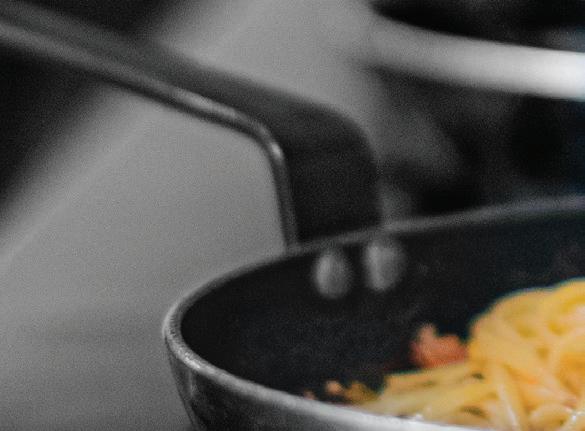


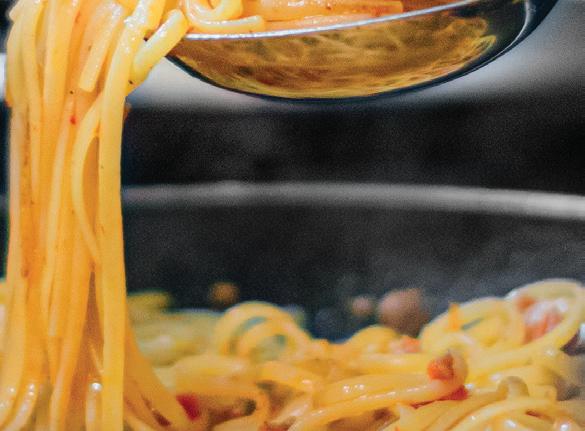








LINE-READY FROZEN PASTA FROM BARILLA.
























































